Every product is independently selected by (obsessive) editors. Things you buy through our links may earn us a commission.

The Best Items to Stock for Any Emergency, According to Survivalists

Compiling a stash of emergency-preparedness items used to be a task many of us kept on the back burner — something we knew was important and we’d get to eventually. But eventually, we now know, might be closer than anyone thought. And while we’re not suggesting you start digging out an underground bunker and filling it with instant noodles , in the past few years we’ve come to learn that having a few things on hand before you need them will only help you, even if it’s just mentally.
Most preppers, like Oregon’s Afrovivalist , Sharon Ross, equate preparation with peace of mind. “Once a person is prepared during a disaster,” she says, “they don’t feel the sense of urgency to go shopping for supplies.” So if visions of empty store shelves still haunt you, have a nice, calm look at our well-organized, detailed list of emergency supplies to keep on hand. To assemble it, we consulted recommendations from the CDC , Red Cross , the Department of Homeland Security , and the NYC Emergency Management Department . But those agencies give you only general categories, and we wanted specifics. So we interviewed 22 survivalists, preppers , bushcrafters , homesteaders , and emergency professionals about their favorite things to always have on-hand — and their advice to make your bugout (or bugin) the best it can possibly be.
Here are their suggestions, broken down into categories based on your level of survivalist instinct. There’s a lot to sift through here, but you can pick and mix products according to your needs. For many, a leaner survival kit makes more sense than a military-grade one. “Simplicity is key when prepping,” says Prepper Press founder Derrick James. Especially as, in a worst-case scenario, you might have to haul all of this gear a considerable distance. “It’s really important for people to know what their limitations are,” says emergency preparedness expert Aton Edwards, author of the upcoming book Afroprep Now! . “Don’t prove how strong you are by dragging around a 40-pound bag . Rage lift in the gym, don’t rage lift your bag.” And in any potential urban or wilderness survival situation, advises Steve Lancia of North Camp Survival School in the Hudson Valley, there’s one piece of gear you should always keep around: “A cool head.”
Most preppers keep two bags : a three-day bag and a two-week bag. While you needn’t get too hung up on that, it’s not a terrible idea to have something that you can easily grab that has everything you need in it in case you have to leave quickly. Bushcrafter Mark Christensen recommends a “quality rucksack, or even a five-gallon bucket , which keeps your emergency gear together.” Survivalist E.J. “Skullcrusher” Snyder (whom you might know from his many appearances on Naked and Afraid ) likes the “tough and roomy” bags by Gregory , but if you prefer something more tactical, he suggests something by Maxpedition . Jim Cobb , editor-in-chief of Prepper Survival Guide and Backwoods Survival Guide magazines, likes the RUSH24 bag from 5.11 Tactical, saying that it’s “robust without being ridiculously huge.” And Lisa Bedford, a.k.a. the Survival Mom , loves the Presidio Tactical Assault Backpack from Flying Circle, because it’s “a very good size for teens and most women.”
Edwards suggests an alternative to traditional rucksacks: the humble folding shopping cart . “If you aren’t physically fit, then lugging around a fully stocked go-bag can be difficult,” he explains. “So a folding cart will let you move around from one shelter to another shelter.”
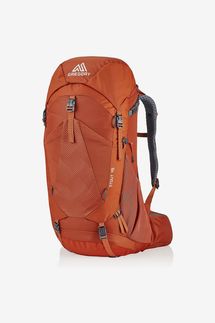
Survivalist Travis McGill, along with Thomas Coyne, the owner and lead instructor at Thomas Coyne Survival Schools , and a survivalist who asked that we refer to him by the pseudonym “RC” like Surefire flashlights because they’re virtually indestructible. They’re so durable, in fact, that some are specially designed to be used as a self-defense weapon, Coyne says. McGill uses the Surefire D3ft but admits “it’s totally overkill” and says you could also “get something that takes AA or AAA batteries since they’re easy to find and replace.” Even a small one for your keychain will do, says Mykel Hawke , a former U.S. Army special forces captain and author of several survival books . “But make sure it has a turn on button, not just squeeze on, for when you need to have light to work and be hands free,” he says. Cobb, Edwards, Snyder and Morgan Rogue of the prepper site Rogue Preparedness , however, prefer headlamps to flashlights so you can be 100 percent hands-free and there’s less chance you’ll put your torch down and lose it. Rogue likes Foxelli or Petzl , while Snyder uses a Black Diamond Spot 325 . Cobb also pointed us toward Streamlight’s products, which “work very well and will take a beating.”
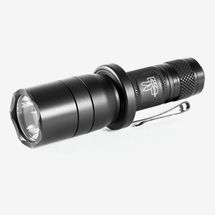
There was plenty of consensus here, too. Unsurprisingly, everyone likes a Leatherman , a brand that also came out strong on our list of the best multi-tools . “I am a big fan,” Snyder says. “There are many types to choose from to meet your needs and budget.” Photographer James Barkman “swears by” his Leatherman Free P4, which can do everything from skin a deer to mend tents and other survival gear. Coyne likes the Supertool 300 . And John Ramey of the prepper site theprepared.com likes the Leatherman Wave+ because it “doesn’t waste space and weight on tools that don’t matter much in an emergency, but it’s versatile and robust enough to be a core survival item.” The Signal , which McGill uses, also includes a fire starter and a whistle. If your survival budget doesn’t stretch to Leatherman, Lancia pointed us to the more affordable knife brand SOG , which designs similarly compact multi-tools for half the price.
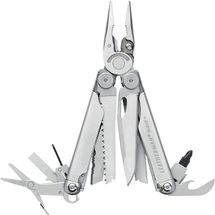
First-Aid Kit
For most preppers, recommending a first-aid kit off the shelf would be like Julia Child telling you her favorite flavor of Pop-Tart. They like to put them together themselves so they can pack them with, as Hawke puts it, “some dressings for real trauma,” including tourniquets, Israeli Bandages , and, in R.C.’s case, zip-tie restraints, though he wouldn’t really say what those were for. That said, Coyne calls Adventure Medical Kits “the best first-aid kits on the market [and] definitely the closest commercially available to what I would customize for myself.” Survival Mom has a different preference, saying, “it would be hard to find better medical kits than those sold by Dr. Joe and Amy Alton at Doom & Bloom.” Their company offers a variety of kits that cover everything from labor to gunshot wounds. Whatever first aid kid you decide on, Mike Glover, crisis management and response expert and host of the popular FieldCraft Survival podcast , recommends you always maintain a 30-day supply of over-the-counter medicine (like painkillers , cold, allergy, anti-diarrheal medications) as well as any prescription medications. And another consideration, via Edwards: “There should be stuff for dental emergencies as well. Any kind of emergency that forces you to evacuate, especially in the city, you’re not going to be able to find a dentist.”
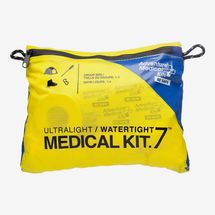
Hand-Crank Radio
Most of our experts recommended Kaito shortwave radios. Coyne’s favorite is the Kaito Voyager because it’s rugged and water-resistant, has plug-in and solar charging capabilities, and is shortwave, which means it picks up broadcasts from around the world. “In an extreme global situation, an entire country may be off-grid, but someone, somewhere, will be broadcasting,” Hawke says. Edwards agrees that a hand-crank radio is vital: “You don’t know if the internet and cellular networks are going to work.” Snyder likes the Kaito KA500 Emergency Radio . “It’s capable of being charged via hand crank, solar panel, micro USB, a standard wall outlet, or batteries,” he says. “And it has a five-LED reading lamp, an LED flashlight, and a red LED SOS beacon light.”
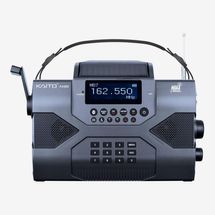
Waterproof matches are the best matches, though our experts say lighters are better than matches. Rogue recommends carrying both, in case either fails. Edwards, Cobb, and Hawke like Bic lighters, but Hawke stresses that “folks should review fire basics [because] it’s surprising how many people don’t know how to build a fire once they have a light.” Coyne uses only UCO Stormproof matches. “Once lit, they cannot be put out,” he says. “They even burn underwater.”
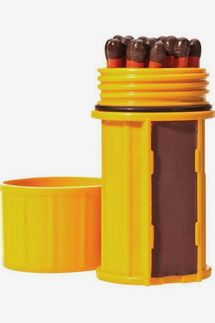
Hawke, Coyne, and R.C. all recommend power banks (which can be used to charge phones and other devices) that can be charged by multiple sources, including the sun. While Coyne personally uses a (now sold-out) Kodiak brand power bank because it’s rugged, water resistant, and has an emergency light, he recommends several reliable options that will also jump start your car, and are extremely small, such as the NOCO Boost . (Coyne also likes OtterBox’s charging cables because they’re “super strong” and “won’t rip or tear easily.”) Ross likes the Jackery Power Station — which has dual USB ports, an AC outlet, and a car port — and calls it “awesome!”
Ramey is the one naysayer when it comes to devices that use solar panels. He prefers to avoid them, because “you don’t want your battery baking in the sun,” he says. After “deep field testing,” he recommends the Anker PowerCore 10,000mAh . He calls it “the right mix of ruggedness, size and weight, capacity, and performance.” Rogue also likes “anything by Anker ” to “charge your phone or other devices perfectly.”
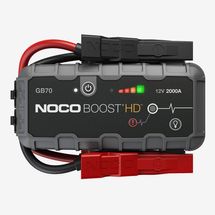
Coyne uses only Energizer, and Ramey won’t budge from his Panasonic Eneloops “because they last a long time sitting on a shelf,” and Survival Mom loves the ones from Survival Frog (no relation). One thing all of our experts agree on is that whatever batteries you get, they should be rechargeable .
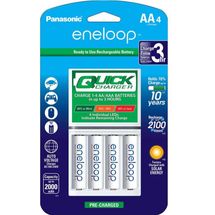
Sleeping Bag
R.C. likes anything from The North Face . Coyne prefers the Montbell brand. Unlike mummy-style bags, which taper toward the bottom like mummy wrappings, Montbells stretch and are “next-level comfortable,” he says. Snyder likes the Big Agnes Anvil Horn 15 because it’s made of lightweight down. Hawke recommends a slightly more austere (and multipurpose) solution: “a large trash bag, like 55-gallon type, can serve as great sleeping bag , shelter, rucksack, float, etc.”
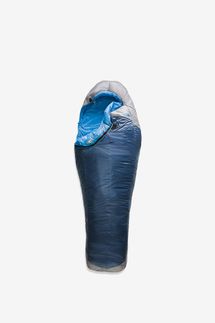
Warm Blanket
No big surprise here: Everyone likes wool . Get “a good, old-fashioned wool blanket,” says Snyder, because it’s “tough, breathes well, and keeps you warm, even if it gets wet.” He suggests an Army–issued wool blanket from a military surplus store. RC loves Pendelton , and Coyne likes the Jungle Blanket by Snugpak. He calls it “a next-level woobie” (military slang for blanket) because it’s “warm, compressible, and water resistant.” If you have any extras around and are stuck at home without heat, Survival Mom also recommends covering the windows of your smallest room with blankets to stay warm.
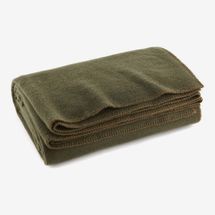
Edwards says you shouldn’t underestimate the power of a good night’s sleep in a stressful situation. Alongside a good blanket, “what’s nice to have is an inflatable hiking pillow ,” he explains. “One of the most important things you need to do in a crisis is get sleep, because your body gets worn down because of the stress it’s under.”
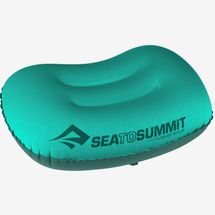
Cards and Games
A surprising number of emergency checklists suggest bringing a puzzle to give yourself something fun to do. But “forget the puzzle,” Coyne says. “A deck of cards is best.” Hawke agrees, preferring cards for their small size, portability, and the numerous games that can be played with them. Also, as they both point out, you can get cards with survival info on the back, turning your diversion into a mini cheat sheet. And don’t forget to bring toys for your kids, Edwards says, “because they’re going to be frightened.” Cobb suggests a family-friendly board game that will keep everyone distracted and entertained during power outages : “Having a couple of fun board games or something similar will go a long way to keeping everyone busy and their minds off the crisis at hand for a bit.”
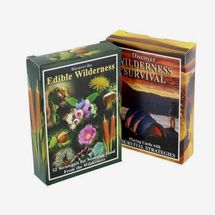
Cleaning Agent
Bleach isn’t the only cleaner that will do the job. Snyder says cleaners like Lysol and Pine-Sol also work to keep things “germ free so that everyone stays healthy and doesn’t get sick.” But if you like bleach, any unscented, unadulterated bleach is fine. “Just get some bleach,” R.C. says.
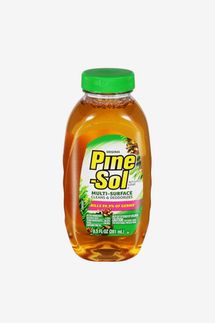
Now hear us out: It might sound extreme, but at some point, you’ll probably wish you had some food. Our experts all approach the food question a little differently. Homesteader Lisa Sutton and the popular YouTuber, Prepper Potpourri (both Michiganers, both grandmothers), are big fans of canning and dehydrating . These processes take a little know-how, but are ultimately very practical and sustainable , especially if you grow your own food. They both like the All American Canner and the Excalibur Dehydrator . If you’re not ready to make your own food, our experts recommend stocking your pantry with, ideally, two-weeks’ worth of non-perishable foods like canned and dried goods, and peanut butter . “Think of very very simple meals, like oatmeal, [and] meals where you can open up a can of soup or chili and pour it over the rice and have more calories and more servings,” says Survival Mom, who goes into more detail about this in her book. And make sure you get stuff you actually like: “Don’t stock up on beans and rice if you don’t eat beans and rice,” Sutton says. Cobb’s in agreement: “Store what you eat and eat what you store. Don’t go out and buy cases of special ‘survival food’ if that’s not what you’re eating normally — a disaster or emergency is the last place you want to add stomach upset to the mix.”
If you want more variety and are thinking of supplementing your stock with freeze-dried food, Survival Mom, Prepper Potpourri, and David at Preppers Survive like Mountainhouse . Sutton recommends products from Thrive Life , “because they are real food, not prepackaged, high carb, high sodium emergency foods” like typical emergency foods tend to be. Hawke likes MRE’s (which aren’t technically freeze dried and which civilians can now buy), Power Bars , beef jerky , and meals from a company called Wise Foods, whose empty containers, he suggests, can be used as toilets. And don’t forget condiments, he says. R.C. recommends any junk food since it’s “full of sugar and preservatives and is good for survival,” if nothing else. Rogue suggests “morale-boosting foods” like macaroni and cheese, packaged cookies, raisins, dehydrated fruits, popcorn, and chocolate. And Edwards points us toward “high-protein stuff that’s not very heavy” like energy bars and trail mix. “Because when you’re in a crisis situation, you are going to burn more energy than you normally expend.”
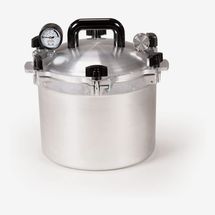
Jessica Kellog of the City of Los Angeles Emergency Management Department recommends having one gallon of water per person per day for seven days, but R.C. suggests getting even more: “You can’t have too much water,” he says. “If disaster strikes, the first thing I would do is fill the bathtub or the sink with water to keep it as a reserve.” As Edwards points out, “any kind of emergency where you have to evacuate your home, especially in a city, would probably classify as something that would disrupt water treatment.” If you’re sticking to bottled, any kind will do. But once that’s gone, you need to have a way to resupply, says Hawke. There are many ways to purify water . The easiest ways are by boiling (you’ll need something metal in which to do that), with water purification tablets (Coyne likes these ), and through various filtration systems . Hawke likes the Life Straw and the O-Zone Pen for individual use, and Rogue, Prepper Potpourri, and Survival Mom like a Berkey for something bigger. David likes LifeStraw’s one-gallon gravity bag that removes lead, parasites, bacteria, and chemicals. It can also be used as a straw alone, with a plastic bottle, or with in-line hydration bladders. If you need a smaller option, Survival Mom uses and recommends the Sawyer Mini. Edwards agrees that the Sawyer is “a really good filter, that’s one of the easiest and smallest to use.”
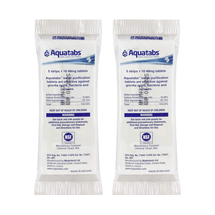
Water storage
Even if you have the ability to filter water on the go, Edwards says that in an emergency, “you’ll want to be carrying as many containers as you can.” James says that these Aquabricks are “the best semi-portable water storage containers” he’s seen. “They’re strong, very stackable, and come with an optional water-filtration system.”
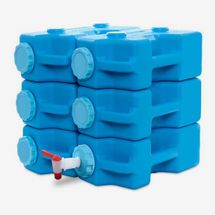
Slightly More Intense Essentials
Emergency blanket.
The consensus seems to be for Heatsheets , which our experts say are the strongest and lightest options available. “There are more lightweight ones, but they rip easily,” says Coyne. McGill suggests getting this option , which is sized for two, making it easier to stay covered.
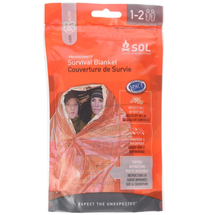
“Just get the loudest,” says Coyne, who also recommends whistles “without moving parts,” like this one .
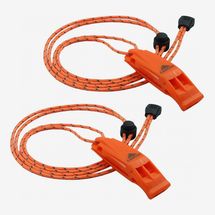
Hand Warmers
Rogue says that hand warmers like these are a godsend, and Survival Mom likes this rechargeable, handheld option from Frog & Co. Or, for a more long-term solution, James suggests simply investing in “a decent pair of warm gloves .”
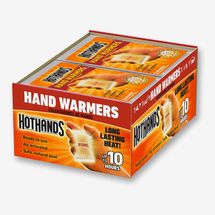
“When thinking of an emergency that would force New Yorkers to evacuate — like an earthquake — masks are important because there would be an enormous amount of particulate in the air, infused with toxic materials,” says Edwards. He, Coyne and Rogue suggest N-95 masks , which paramedics use to protect themselves from pathogens. Ross, on the other hand, suggests you go for a reusable P-100 respirator, which offers the highest protection possible, blocking out 99.9 percent of contaminants, compared to an N-95, which filters out just 95 percent of particles and isn’t oil-resistant. Lancia says it isn’t so paranoid to buy a full-face mask (“The more I watch the news, the more I’m convinced that we all need a high-quality gas mask and CBRN filter to go with it. Mira Safety makes some of the best.”) But, as Christensen points out, “even a wet rag held over your mouth and nose helps a lot.” For extra preparedness points: “I would also have goggles to protect my eyes,” says Edwards. “And I’d have work gloves in there, because in the case of an earthquake, you’re moving debris.”
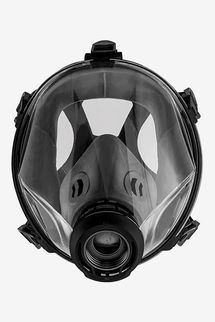
Fire Extinguisher
There are four different classes of fire extinguishers for four different kinds of fires — ordinary combustibles, grease, electrical, and metal — and our guess is you’d rather not get them all. (For example, R.C. likes a sleek Blaze Defense Fire Suppression Device , but it’s not for use on electrical fires.) Your best bet is a standard home model, which is versatile and inexpensive.
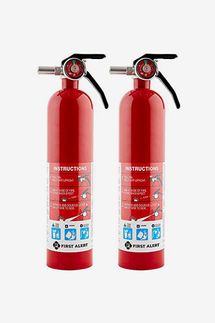
Alternative cooking vessels
“Every household needs at least one alternative way to warm and cook food and heat water, and a solar cooker doesn’t require storing any type of fuel, which is a huge advantage,” says Survival Mom, who recommends the Sun Oven , (which dehydrates, too). She also likes rocket stoves , “highly efficient stoves that require only tiny amounts of biofuel,” and suggests this one from Silver Fire . David prefers Coughlin’s steel-coated canned-heat stove, which is sturdy enough for heavy pots and has covered sides that block wind. It’s compatible with any canned fuel and folds flat when not in use.
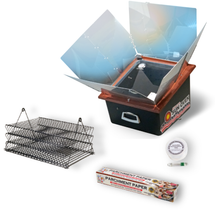
Should you find yourself at home without heat, “seal off one room that has the fewest number of windows or anything that’s gonna allow cold air to come in, and put up a tent in that room,” says Survival Mom. A cold-weather tent like this one is a good choice, she says, since it’s both warm and small enough to fit in a small room.
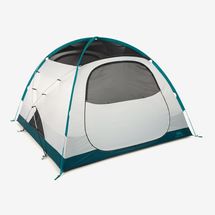
Plastic Sheeting
“Plastic sheeting, or even a nice tarp, can have many uses: from collecting rain water to drink, to [making] a traveling shelter if you don’t have a tent [and] sealing off areas to keep out germs or bad air from coming in,” Snyder says. Edwards also recommends tarps as a tent alternative: “A tarp can provide a barrier from the ground, or become a shelter — tents can be a little expensive, and tarps are tougher.”
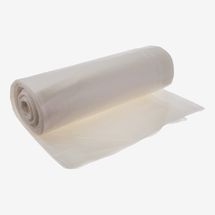
Duct Tape and Paracord
Snyder calls duct tape “a survivalist’s best friend” that he’s seen used for “everything from making cups to helping stabilize a broken limb to patching leaks.” He and Coyne both like Gorilla tape . Alongside duct tape, Edwards says you can “never have too much line” for tying things down, and recommends carrying a fair few feet of versatile paracord. Cobb agrees, saying that paracord is “the traditional cordage for preppers.”
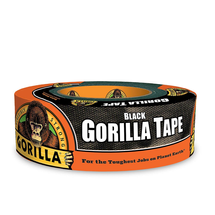
Everyone recommends you have a plan, preferably written out, and, if not rehearsed, at least talked about and memorized by everyone in your family. “Because in those moments when you’re frozen in indecision, and you panic, you’re starting to make really bad decisions,” says Survival Mom, who explains that “what you put into place beforehand is going to help you make the best decisions in those very intense moments.” “To implement the plan,” says Kellog, “survival supplies should be stored in accessible places that are known to members within the household,” And you should know how and when to use all the items you’ve gathered and test all your gear. And be sure to store important documents, photos and other items all in one place. Rogue likes the Fullive fireproof and waterproof bag for this purpose. Edwards adds that when on the move, you’ll want to keep those passports and birth certificates close to your person, rather than in a separate bug-out bag.
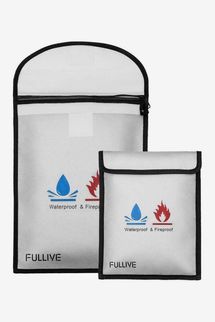
Triangular Bandages
Hawke loves these and has found over thirty uses for them, examples of which are here and here .
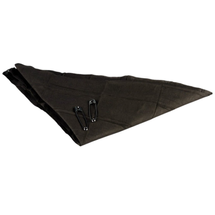
Personal Hygiene Products
Glover recommends that “people carry a stockpile of personal hygiene items in the event infrastructure and supply chains are adversely affected.” Both Rogue and David like alcohol-free No-Rinse Body Wash. And rather than carrying a stockpile of toilet paper, Edwards suggests packing a travel bidet , which will take up less space and be “a lot more sanitary.” In general, he says, “don’t short yourself” on these kinds of comfort items. “Because you want to be able to maintain your sanity. These are the little things that keep you sane.”
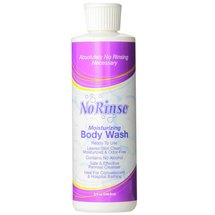
Signals and Maps
Have a compass and a mirror (Coyne likes this one , below), and designate FEMA locations and evacuation routes on your map.
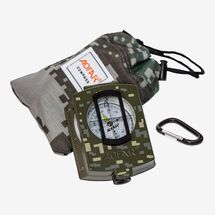
Reference material
Ross recommends you educate yourself about what you can and can’t eat out in the wild and suggests you get a book on the subject.

“For waste disposal,” Kellog says.
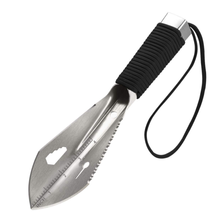
McGill suggests getting a 2000W generator like this one to keep in the garage in suburban areas so you can keep your refrigerator on and charge your phones in case of power outages.
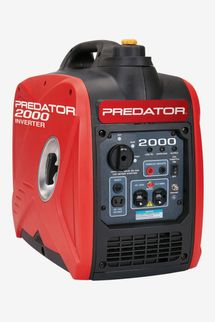
McGill also suggests keeping five gallons of gas in your garage. “To keep it from going bad, you can fill your car up with it once a month and take the tank to get refilled with fresh fuel at the gas station.”
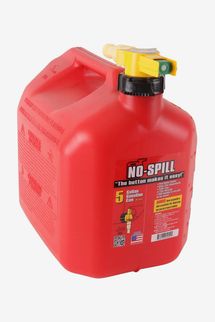
Solar Panel
Rogue swears by a folding portable solar panel “that you can open up and place within sunlight to charge your devices directly from the panel,” she says. “They come with USB plugs, so phones and other devices plug right in. You can do it outside or through a sunny window.” Goal Zero panels have never failed her, “and they’ll even work with some overcast, which is rare with the smaller solar panels.”

Solar light
Survival Mom recommends having a solar light and likes this one because “it’s collapsible, so it can be tucked into a backpack, glove box, or any other small area.”
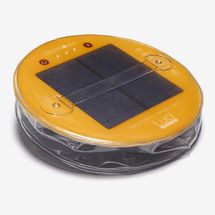
EMP Protection
If you’re worried about the possibility of a nuclear electromagnetic pulse event — the likes of which could potentially short-circuit your personal electronic equipment, and came up in conversation with many of the preppers we talked to — then James suggests investing in Faraday protection for your all-important phone and laptop.
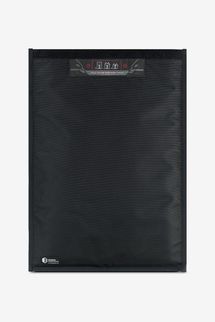
Additional reporting by Stacey Dee Woods
The Strategist is designed to surface the most useful, expert recommendations for things to buy across the vast e-commerce landscape. Some of our latest conquests include the best acne treatments , rolling luggage , pillows for side sleepers , natural anxiety remedies , and bath towels . We update links when possible, but note that deals can expire and all prices are subject to change.
- hiking and camping
- the strategist
- coronavirus
- recommended by experts
- natural disaster preparedness
Every product is independently selected by (obsessive) editors. Things you buy through our links may earn us a commission.
Deal of the Day
Micro sales, greatest hits, most viewed stories.
- All of the Best Mother’s Day Gift Ideas
- Ask Chris Black: Who Makes Your Favorite Under-$50 T-shirt?
- The 17 Very Best Protein Powders
- The Strategist Haul: What the Editors Bought in April
- All the Best Walking Shoes We’ve Ever Written About
- Mother’s Day Gifts for Every Type of Mom
Today’s Top Clicked
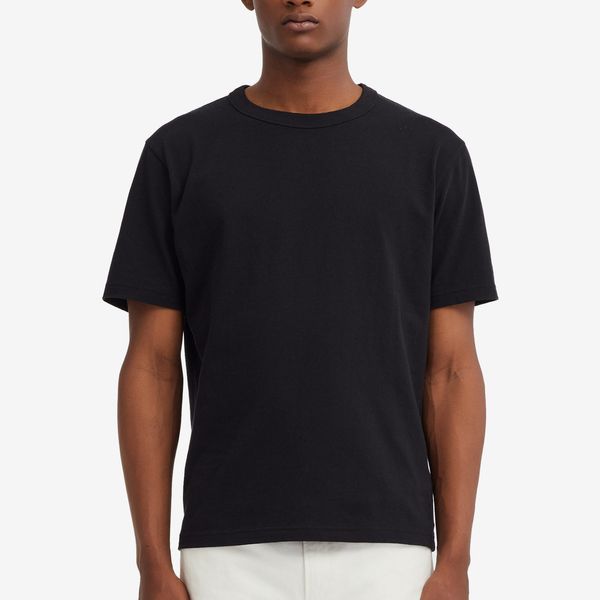
- Search Please fill out this field.
- Manage Your Subscription
- Give a Gift Subscription
- Sweepstakes
- Travel Products
- Travel Accessories
The 6 Best First Aid Kits for Travel 2024
Stay prepared with compact, pre-made first aid kits fit for any adventure.
Katherine Alex Beaven is a Los Angeles-based travel, food and drink, and culture writer.
:max_bytes(150000):strip_icc():format(webp)/Katherine-Alex-Beaven-25bffd3fbeda41bc92974af662c60f0c.png)
In This Article
Jump to a Section
- Our top picks
- Tips for Buying
- Why Trust T+L
We independently evaluate all recommended products and services. If you click on links we provide, we may receive compensation. Learn more .
Travel + Leisure / Kristin Kempa
First aid kits are often one of the most overlooked travel accessories, even though they can make or break your vacation experience. In best-case scenarios, you won’t ever need it, but on the off-chance you do, it’ll quickly prove to be one of the most savvy additions to your packing list. First aid kits come in handy for help with everything from headaches and dehydration to cuts, scrapes, and bites, or even sprained appendages.
For expert insight on what to look for in a travel first aid kit and why they are one of the most essential travel accessories, we spoke with Raelene Brooks, PhD, RN, Dean of the College of Nursing at the University of Phoenix. Based on our research and experience and Brooks’ expert advice, we compared various top-selling travel first aid kits on the market, making sure to consider the overall size, number of items, variation of ailments covered, and variety of items included. The waterproofed Adventure Medical Kits Ultralight Watertight .5 first aid kit is our favorite thanks to its wide array of wellness gear despite its compact size — but if you’re looking for something a little different, we’ve got plenty of great first aid kit picks below.
Best Overall
Adventure medical kit ultralight watertight .5.
It treats a wide variety of issues and comes in a lightweight, double-waterproof pouch.
The bag lacks any interior organization.
The Adventure Medical Kit Ultralight Watertight .5 is our go-to first aid kit for travel. We’ve traveled around the globe, staying in posh safari lodges and in backpacker hostels with this kit and it has never let us down. It comes with over 40 pieces of first aid to help tackle everything from splinters and blisters to minor cuts or scrapes to bug bites. We like that it also comes with two doses of various over-the-counter pain relievers, plus antihistamine, antibiotic ointment, and tools to remove ticks and fasten bandages. You’ll also get a good variety and number of bandages and wound dressings. We’ve found that it’s also easy to replace these items as needed while on the go. Fully stocked, the contents are enough to cover one person for about two days (with the same affliction).
Standout features are the durable double-waterproof bagging (which comes in clutch on rainy days, winter road trips , and water adventures and also in case of spills or heavy humidity), the minimal 3.6-ounce weight, and two exterior corner loops that make it easy to clip the kit onto your backpack for easy access. The bright yellow color makes it easy to find in a pinch — no rummaging through your backpacking backpack — though we will say that the lack of interior organization may cause some people to fumble through the contents of the bag trying to find what they need (not ideal in an emergency situation).
The Details: 5.5 x 11 x 1 inches | 43 pieces
Johnson & Johnson First Aid To Go Kit
It covers bandage basics and leaves room for you to customize your kit.
The included items will likely help minor cuts or scrapes only.
If you’re just looking for the bare minimum of what you might need while out on a trip, the Johnson & Johnson First Aid To Go kit is your best bet. This smaller-than-your-hand-sized kit contains 12 first aid items, mostly centered around minor scrapes and cuts. You’ll get sterilizing wipes, two sizes of bandages, and a couple of gauze pads — all tucked and stored nicely in a sturdy plastic case with a snap-tight closure. There’s no medicine or tools in the case, but there’s plenty of room left in the case to add your own custom extras to beef up the kit (which is what we’ve done in the past) such as over-the-counter pain pills, prescription medication, allergy pills, cotton swabs, tweezers, or other travel-sized first aid items. It’s still a great and convenient kit to just toss into your day bag or day tripper waist bag.
The Details: 3.8 x 4.3 x 1.1 inches | 12 pieces
Best Comprehensive
First aid only all-purpose essentials first aid kit.
It includes items that many other kits leave out, like a thermometer and gloves.
You may want to upgrade with your own OTC medicines.
This nearly 300-piece kit contains everything you’d need to use in an accident situation involving burns, cuts, or scrapes — down to the disposable gloves, scissors, and a thermometer. Like most kits, it’s heavily focused on bandages, and includes a variety of adhesive, fabric, and gauze bandages, as well as butterfly wound closure bandages, knuckle bandages, and fingertip bandages. You’ll also get key ointments and wipes to treat burns and stings, and fight germs. Additional tools include a tongue depressor (which also doubles as a finger splint), thermal blanket, cold pack, and tweezers. Impressively, all this and more fits inside a double-sided zippered case no larger than the usual toiletry bag. Although it’s packed with first aid accessories, we would like to see more medicine included.
The Details: 9.25 x 2.87 x 7 inches | 298 pieces
Best for International Travel
My medic ready mini first aid kit.
It comes with individually-packaged, ailment-specific mods that cover a wide range of first aid needs.
It’s a little bigger than we’d like.
When traveling to a foreign country, acquiring some first aid items may be more difficult due to a language barrier, overall access, or how the healthcare system works. The My Medic Ready Mini First Aid Kit is packed full of first aid accessories to cover everything from allergies to cuts to suspect water quality. The exterior is water-resistant and easy to wipe clean, while reinforced zippers also help keep water out. Inside, two mesh stash pockets are loaded with My Medic color-coded mods — individually packaged kits containing items to treat specific issues — so you can easily find what you need. Standout features include pieces for wound irrigation, a digital first aid and survival tips guide, a flashlight, hydration packets, water purification tablets, and a whistle. We’re also big fans of thoughtful items like hydrocortisone cream, friction frosting, and petroleum jelly. We appreciate that the kit is small enough to hold in one hand, but it can still feel like it’s taking up a fair amount of packing space.
The Details: 7.5 x 4 x 7.5 inches | 100 pieces
Best for Kids
Keepgoing first aid gokit.
It’s a TSA-approved first aid kit designed with kids’ needs in mind.
It doesn’t include any medicines.
Looking for a cheery take on a first aid kit? KeepGoing First Aid GoKit comes in multiple, cute kid-friendly patterns to help make the first aid experience a bit brighter. The kit comes with 130 pieces of first aid items ranging from bandages to moleskins and disposable thermometers — all with kid-friendly patterned packaging. Some of the standout features include tick removers, cotton-tipped applicators, trauma scissors, and 20 stickers to award brave kids. While this kit does come with a good assortment of creams (hydrocortisone, burn relief, lip balm, and antibiotic), it doesn’t have any medicine included, so you may want to add your own.
The Details: 6.75 x 5 x 2 inches | 130 pieces
Best for Dogs
Adventure medical kits me & my dog.
It’s a kit that can be used for both you and your dog!
For dogs, it mainly centers around the treatment of paw injuries.
You do everything with your dog, so why not share a first aid kit? We love this kit because you don’t have to pack two different kits; you and your dog can both be helped with the contents in this one kit. The Adventure Medical Kits Me and My Dog Kit has bandages, gauze dressings, antiseptic wipes, wound irrigation, and sterile gloves for cuts and other wounds. It also has two doses of aspirin and antihistamine each, a cold compress and wrap for sprains, and key first aid tools like trauma scissors, tick removal tweezers, a thermal emergency blanket, and a leash. One of the bandages doubles as a muzzle for scared pups, and if you’re unsure how to apply any of the items to your furry best friend, there’s also a pet first aid manual to help guide you. Since this is a simple zippered case, it could be worth adding some medications as advised by your vet as this kit mainly covers injuries from walking and not other hazards like foreign object ingestion or non-paw maladies.
The Details: 7.5 x 3.5 x 5.3 inches | 48 pieces
Tips for Buying a Travel First Aid Kit
Prioritize size and durability.
In a best-case scenario, you won’t ever have to use your travel first aid kit, so it will be traveling with you often. Give extra points to kits that are durable enough to survive multiple trips and that come in a size that can be packed in all different travel situations (think lightweight and compact).
Check how many people can be treated with the kit
Consider your travel group size when buying a travel first aid kit. Does one kit cover the entire family or just one or two people? Be sure to pack enough first aid to treat each person you’re responsible for.
Consider the conditions and risk of your trip
Different trips will dictate the exact items you’ll need in your first aid kit. Look for kits that can address specific dangers or injuries you may face on your trip, from sunburns to sprains and insect bites to serious cuts.
Carrying a first aid kit on your travels stocks you with essential life-saving items that can help provide temporary care during an emergency situation until help can arrive, Brooks says. She also adds that locating these items in a foreign country or when traveling can be difficult, making it best for travelers to have their own kits on hand.
According to Brooks, some of the most essential items a kit should include are medical tape, compression wound dressing, gauze, irrigation wound wash, antiseptic/antibiotic ointment, alcohol pads, cleaning/prep pads, and assorted sizes of blister strips and bandages. She also says it’s useful to have pills to treat motion sickness, allergies, and mild pain, plus cold packs, wound closure materials, a thermal blanket, hydration packets, and even a multi-purpose plastic bag that can be used as a splint, as gloves, or as a CPR shield.
Buy products that cover the essential must-have first aid kit items, and then add any specialty custom items for your specific travel situation, activities, or health concerns. For example, Brooks advises that anyone with asthma include an albuterol inhaler, while travelers with diabetes should include some candies or glucose for low blood sugar. Those with cardiac issues should pack nitroglycerin tablets or spray, along with aspirin.
Why Trust Travel + Leisure?
For this list, Katherine Alex Beaven talked to a medical professional about essential items that should be in a travel first aid kit. Alex also considered kits based on her own 15 years of personal experience as a frequent, accident-prone traveler. While researching first aid kits for travel, we spoke with Raelene Brooks , PhD, RN, Dean of the College of Nursing at the University of Phoenix .
Love a great deal? Sign up for our T+L Recommends newsletter and we'll send you our favorite travel products each week.
Advertiser Disclosure
Many of the credit card offers that appear on this site are from credit card companies from which we receive financial compensation. This compensation may impact how and where products appear on this site (including, for example, the order in which they appear). However, the credit card information that we publish has been written and evaluated by experts who know these products inside out. We only recommend products we either use ourselves or endorse. This site does not include all credit card companies or all available credit card offers that are on the market. See our advertising policy here where we list advertisers that we work with, and how we make money. You can also review our credit card rating methodology .
The 7 Best Travel First Aid Kits for Unexpected Emergencies [2023]
Amar Hussain
Senior Content Contributor
779 Published Articles
Countries Visited: 63 U.S. States Visited: 9
Keri Stooksbury
Editor-in-Chief
34 Published Articles 3151 Edited Articles
Countries Visited: 47 U.S. States Visited: 28
![emergency travel kit items The 7 Best Travel First Aid Kits for Unexpected Emergencies [2023]](https://upgradedpoints.com/wp-content/uploads/2022/05/Woman-packing-first-aid-kid-and-sunscreen.jpeg?auto=webp&disable=upscale&width=1200)
Things To Consider in a First Aid Kit
1. full travel first aid set with 300 pieces, 2. complete medical and survival kit for traveling, 3. small package first aid kit for short journeys, 4. mini kit with 27 medical essentials, 5. mini first aid pack with crush-resistant bag, 6. bandage and pain relief balm pack, 7. great for minor first aid interventions, final thoughts.
We may be compensated when you click on product links, such as credit cards, from one or more of our advertising partners. Terms apply to the offers below. See our Advertising Policy for more about our partners, how we make money, and our rating methodology. Opinions and recommendations are ours alone.
Injuries happen without respect for time or location, and traveling without a first aid kit is asking for trouble.
That’s why it’s important to have a handy and compact first aid kit that includes a wound disinfection component, gauze pads, and adhesive tape to keep the gauze fixed. These elements can help you prevent wound infection if you end up getting a cut while on the move.
To be fully prepared, you need to ensure that your first aid kit is well-equipped, so let’s take a look at what you should look for.
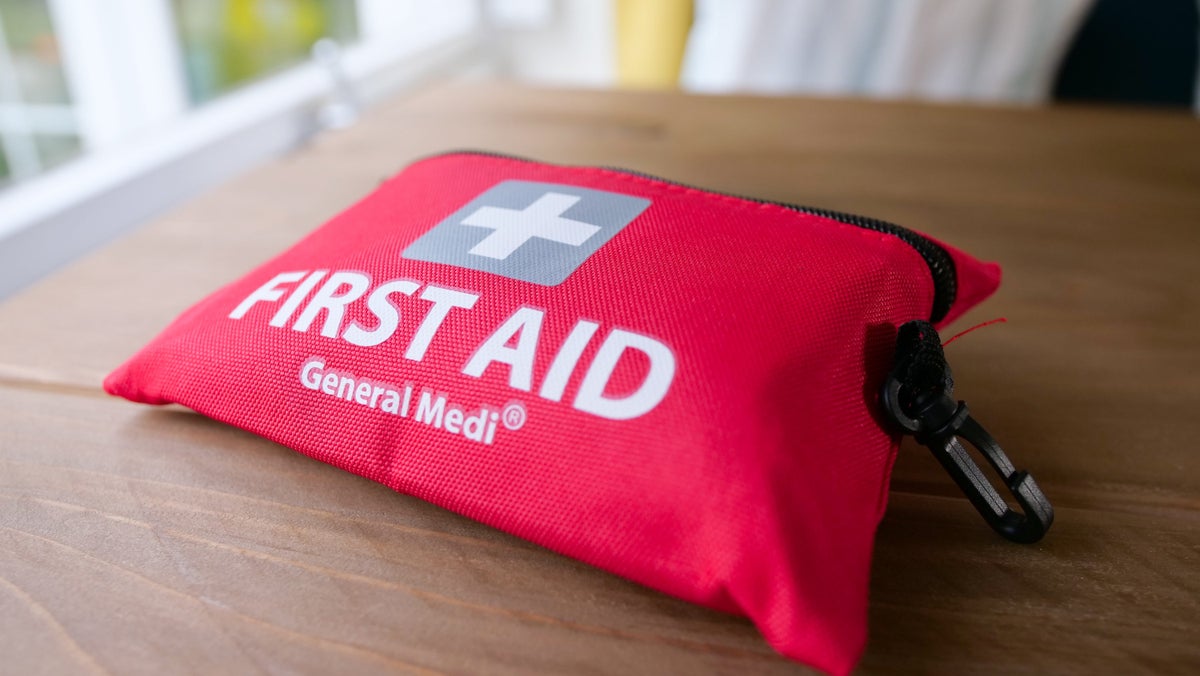
Before buying a first aid travel kit, you should consider a few factors to help you make the right decision. Not every kit is suitable for all types of injuries, so you may have to prioritize.
You should also consider how well the first aid kit fits into your luggage or backpack and whether it has enough space for you to add personal medication .
Finally, the medical pieces included can vary greatly, as some kits mainly consist of gauze pads, while others are filled with items for more serious injuries. Here are some of the main features to consider before buying a first aid kit for traveling.
Compact Size
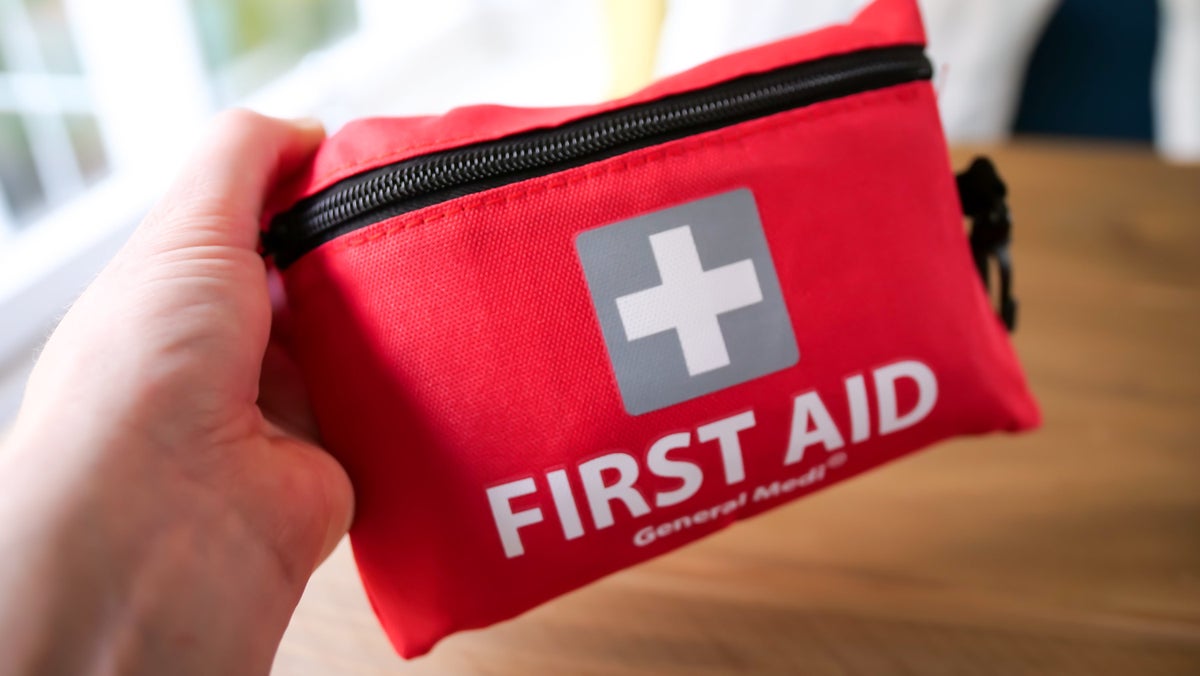
Every usable travel first aid kit comes with a carrying bag, so consider whether the size of the bag fits into your luggage . It largely depends on the number of items included, as some kits come with 100 medical pieces and others with up to 300.
Bottom Line: To help you decide on your size needs, consider the number of people going on the trip and how long you will be away.
Medical Pieces
There are differences in the contents of each first aid kit, but some items are essential. When buying a first aid kit for traveling, make sure it comes with gauze pads, medical tape, bandages, antiseptics, gloves, trauma dressing, and scissors .
These are just some of the items you can use to disinfect and dress a wound to make sure it’s clean until you get back to your hotel or reach a hospital in the case of more serious wounds.
Number of Pieces
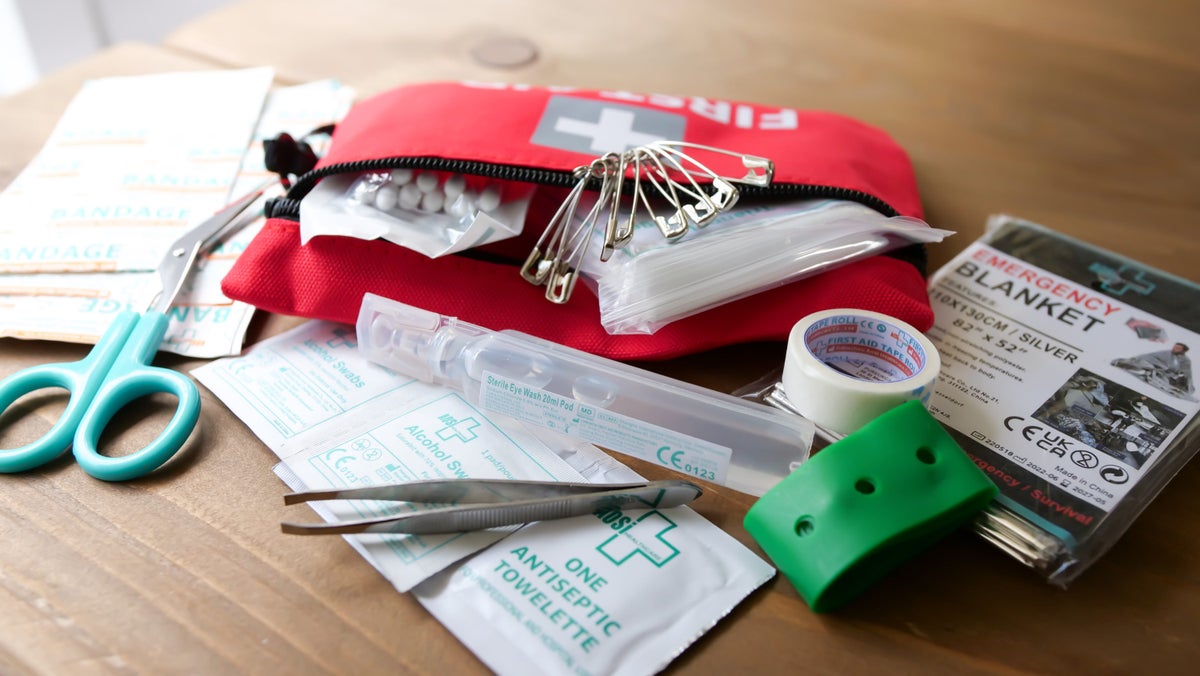
If you are going on a trip for a day or 2, the chances are that basic first aid kits will suffice. However, if you are going on a longer trip, especially with your family or friends, you need to bring a well-equipped kit.
These often include up to 300 pieces in a set and will almost certainly be sufficient for any injury you might suffer. It’s always a good idea to bring a well-equipped kit on trips to faraway destinations — just in case.
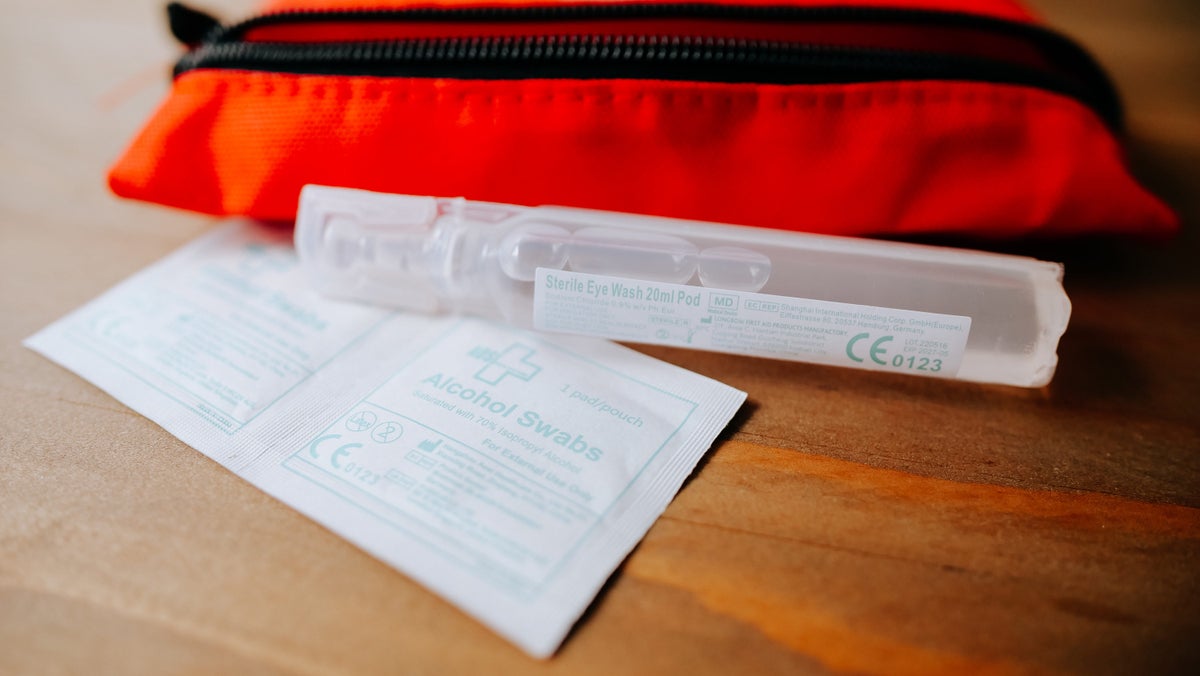
If you plan on bringing personal medication in combination with all the medical pieces in a first aid kit, you should put labels on every medication . By doing so, you will prevent confusion if you need to use a certain item in case of an emergency.
Bottom Line: Wherever you’re headed, a first aid kit is part of any list of essentials for camping , hiking , or the beach .
The 7 Best Travel First Aid Kits
Covering a range of sizes for different lengths of trips, this list includes some of the best medical sets you can use for first aid.
First Aid Only All-Purpose Essentials Soft-Sided First Aid Kit
This set is a complete yet compact travel solution with dimensions suitable for travel at a 9.2-inch length and 7-inch height. The First Aid Only complete first aid kit comes with 300 pieces and only weighs a pound while catering to all sorts of emergencies and smaller injuries .
Because of its size, it’s even a great solution for short trips. It comes with a hygienic medical preservation bag where all the items are stored. The bag also keeps the items inside organized and labeled, so you can easily find whatever you might need.
It fits into a backpack or a travel bag, and some of the most important pieces include adhesive bandages of all sizes, antibiotic ointment, butterfly wound closures, applicators, and gauze pads.
What We Like:
- A compact and complete medical set
What We Don’t Like:
- Doesn’t leave much room for personal medication
EVERLIT 250 Pieces Survival First Aid Kit
If you are looking for a complete survival set for tackling nature, rather than just a medical first aid kit, the Everlit survival kit is a perfect option. It comes with 250 pieces of medical supplies, including some useful survival kit additions.
It has all the medical essentials like alcohol prep pads, adhesive bandages, sterile gauze pads, safety pins, cotton tips , and cotton balls . You can also find a CPR mask, metal tweezers, scissors, PVC gloves, and other equipment.
As for the survival supplies, there’s a tactical EMT molle bag, disposable poncho, fire starter , tactical flashlight, and a glow stick, in case you plan on spending some time in nature.
- The survival essentials
- The bag might be a bit bulky
Mini First Aid Kit 110 Pieces Small First Aid Kit
Those in pursuit of a small and compact first aid kit will be surprised at how many essentials can fit into this small package. The mini first aid kit from General Medi has 110 pieces, including some surprising additions like an emergency foil blanket, a CPR respirator, and scissors .
As for the run-of-the-mill medical supplies it contains, there are adhesive plasters, sterile gauze pads, cleaning swabs, a conforming bandage, and a triangular bandage. You can also find alcohol prep pads and antiseptic towelettes among the contents.
The small package made of waterproof nylon with a zip opening ensures that your medical supplies are safe and compact enough for carrying anywhere.
- Small and compact
- No room in the bag for personal medication
Coleman All Purpose Mini First Aid Kit
A unique option for those who want only the essentials is the Coleman All Purpose mini first aid kit. This solution comes in a small pack of 0.88 x 3.88 inches, so it can easily fit into any backpack pocket or travel bag storage space.
Despite its tiny size, it provides all the essentials. The kit comes with 27 items, including 2 butterfly bandages, large safety pins, antiseptic wipes, antibiotic ointment, and 1 razor blade.
This set provides all the basics you might need in case of a small injury, and the embedded cross logo makes it easier to find it in your baggage.
- Its small size
- Limited supplies
THRIAID Mini First Aid Kit 100 Pieces Water-Resistant Hard Shell
If you want a sturdy container for your medical supplies, you can benefit from using the Thriaid mini first aid pack. It comes with a hard-shell carrying bag that’s crush-resistant and water-resistant , so you can feel at ease knowing all your medical essentials are safe.
This pack comes with more than 100 medical necessities for first aid, all inside of a useful bag that can be repurposed. In case of injuries, you can rely on internationally-certified products for wound disinfection and tending.
The contents include disposal gloves, scissors, an antiseptic towelette, different sizes of bandages and gauze pads, and adhesive plasters.
- The crush-resistant shell
- Zipper bag should be sensitively handled
Hot Tip: You may need to check any luggage that contains scissors that are longer than 4 inches from the pivot point. See more details in our guide to the items you can and cannot bring through TSA security .
Welly First Aid Travel Kit Bravery Balm Kit
Welly’s Bravery Balm travel kit includes just enough items for 1 person to use to tend to cuts and abrasions while traveling. The set includes 1 small tin box that’s 4 inches long and 1.7 inches wide, and everything fits right into it.
The pack includes 13 essentials such as Bravery Balm triple antibiotic and pain relief ointment . The Welly set also includes 12 flexible fabric bandages of standard sizes.
- Perfect for solo travel
- Lacks some medical equipment like scissors and gloves
Johnson & Johnson First Aid Kit Travel Size Pack
If you’re looking for a small first aid kit that’s great for minor interventions, this Johnson & Johnson kit likely has just what you need. It’s small enough for traveling and comes in 3 identical small medical packs.
While this set might not be enough for treating major wounds, you can treat small injuries perfectly well. The set comes with 12 pieces in each pack and includes hand cleansing wipes, gauze pads, band-aids, and adhesive plasters . These sets fit into any travel bag for easy portability, even on short trips.
- A carrying bag isn’t included
Your choice of first aid kit all comes down to the type of travel you are planning in terms of the length of your trip and the number of people that will use the kit.
All of the listed options are great for minor interventions, while sets like the First Aid Only 300-piece pack serve as a more comprehensive solution. The size of a kit is also a factor to consider, as you will need one that fits easily into your luggage.
Frequently Asked Questions
What should you look for in a first aid kit.
The most important medical supplies you should have at your disposal while traveling includes gauze pads, bandages, antiseptics, and antibiotic ointment. You might also need medical tape and tweezers. Keep in mind that a first aid kit is only meant to treat minor injuries.
How many items should be in a first aid box?
It depends on your needs, including the length of your trip and the number of people in your group, but they range from 12 pieces to over 300 pieces. You should always opt for a compact kit that still has as many supplies as you need.
Do first aid sets include CPR essentials?
Some better-equipped first aid kits include CPR masks along with regular medical essentials but most mini travel first aid kits do not.
What’s the best first aid travel kit size?
If you are like most travelers, chances are you don’t have much room to spare in your luggage. So look for a compact solution, some of which can fit more than 100 pieces in a bag or case no longer than 10 inches.
Was this page helpful?
About Amar Hussain
Amar is an avid traveler and tester of products. He has spent the last 13 years traveling all 7 continents and has put the products to the test on each of them. He has contributed to publications including Forbes, the Huffington Post, and more.
INSIDERS ONLY: UP PULSE ™

Get the latest travel tips, crucial news, flight & hotel deal alerts...
Plus — expert strategies to maximize your points & miles by joining our (free) newsletter.
We respect your privacy . This site is protected by reCAPTCHA. Google's privacy policy and terms of service apply.
Related Posts
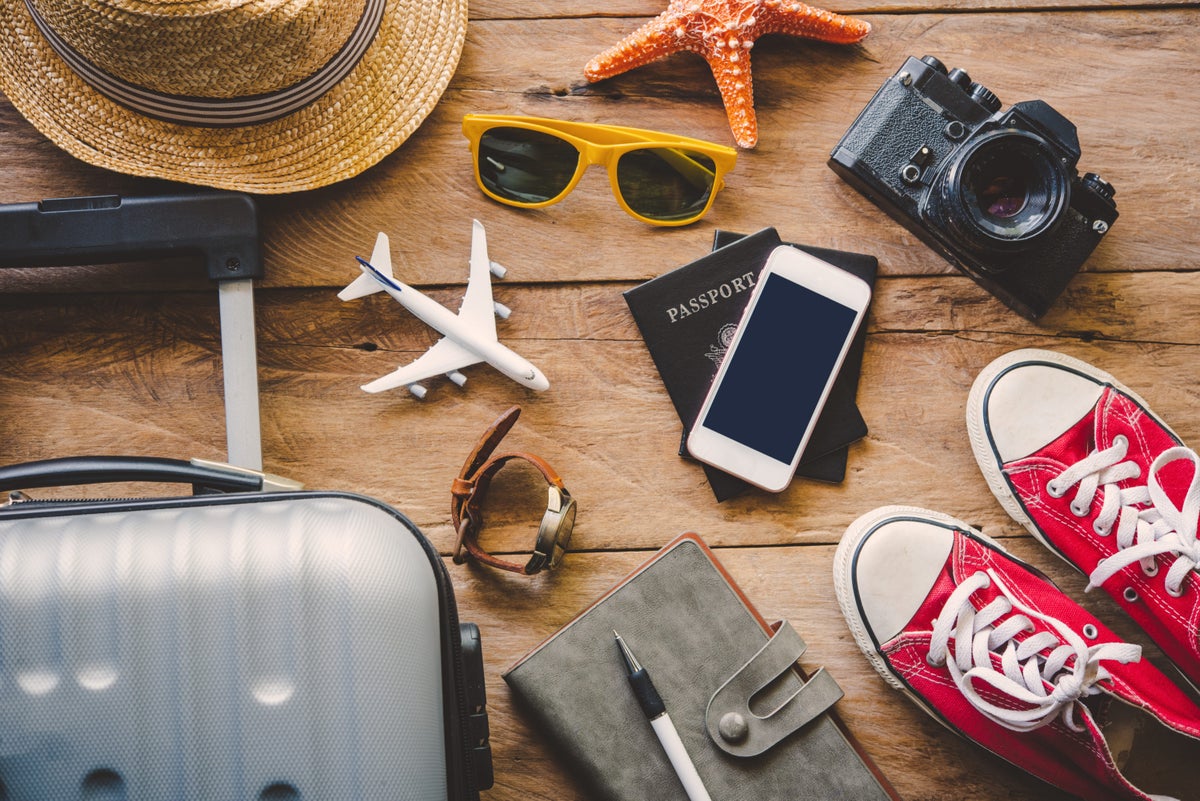
UP's Bonus Valuation
This bonus value is an estimated valuation calculated by UP after analyzing redemption options, transfer partners, award availability and how much UP would pay to buy these points.

DIY: A Travel Medicine Kit Checklist That Fits in Your Carry On
This post may contain affiliate links. As an Amazon Associate I earn from qualifying purchases.
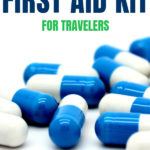
A travel medicine kit is an essential part of packing. Getting sick on vacation is miserable , but sooner or later, it happens to everyone. I seem to get hit with a bad cold every year while traveling (those darn airplane germs!) and my husband is so sensitive to stomach issues we call him “the canary in the coal mine”.
The good news is that it’s remarkably easy to find just about any medication anywhere in the world — but it often takes a big chunk of time, especially if you’re staying in small towns or rural areas where you have to drive a long distance to the nearest pharmacy. And take my word that you don’t want to get food poisoning at 1am and have to wait until morning for a store to open to get supplies.
The faster you can solve your problem, the better. But unlike Mary Poppins, I can’t carry everything all the time — there has to be a balance between having enough to be useful without weighing you down.
After tons of travel, I’ve created a comprehensive, mini first aid kit. This DIY first aid kit is quick and cheap to make plus has all the essentials. When you’re not traveling, throw it in your day bag for local adventures or keep it in your car so it’s always handy.
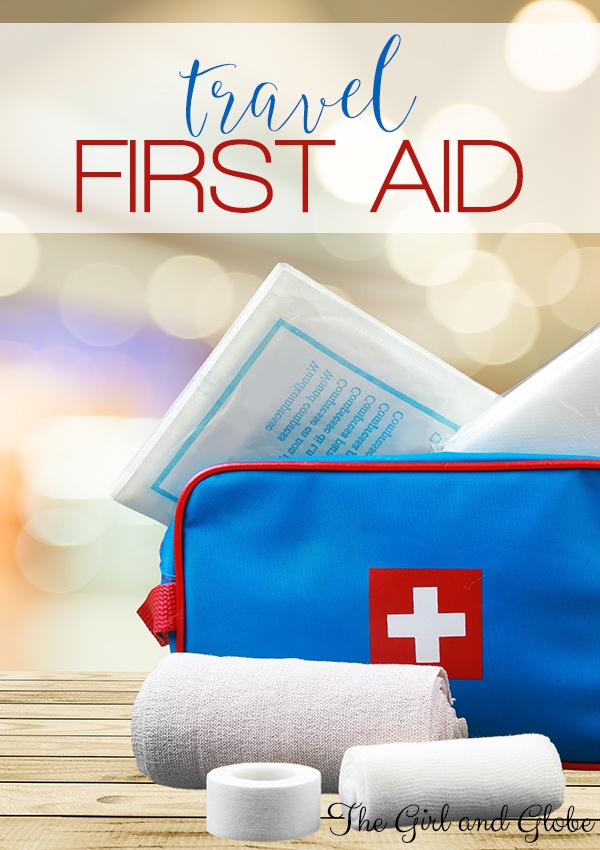
Travel Medicine Kit Basics
Although you can buy a pre-packaged travel emergency kit, I recommend tailoring it to your specific needs. That way you’re 100% familiar with what’s in it ahead of time and have products you trust.
Generally speaking, there are three sets of items that should be on your travel first aid kit list:
- Medications You Definitely Need (prescriptions you use at home on a regular basis + special medications for your destination, such as something to help with altitude sickness)
- First Aid Items You Commonly Use (in my case, that’s band-aids for a myriad of adventure activities + ibuprofen as the “all-purpose drug” for fevers, muscle soreness, and headaches)
- Items You Can’t Get Easily at Your Destination (I include items I’ll want immediately in this category; i.e. anti-diarrheals, so you can solve the problem at 3am instead of running to a store)
Your first aid packing list might change a little for every trip. You can take just the necessities for a weekend in New York City but will need a more comprehensive first aid kit for remote destinations.
Organizing Non-Prescription Medications
No one wants to pack a dozen pill bottles in their carry-on! Besides, it’s highly unlikely you’ll need all 200 aspirin! Better to condense a 2-3 day supply into a more compact case. That’s likely all you’ll need — if that! — but in any case, it’s at least enough to buy you time into you can restock during your trip.
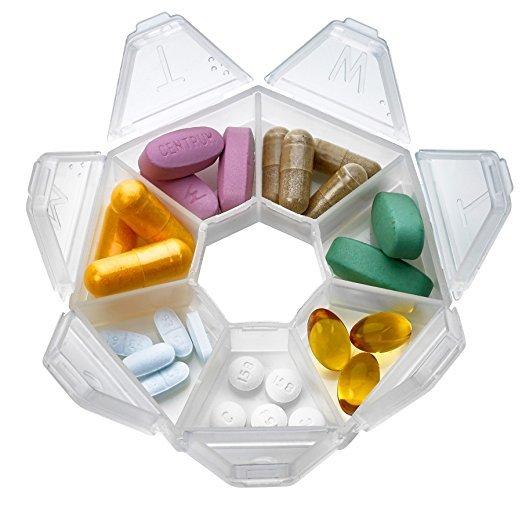
That’s why I use a standard 7-day pill case to organize my over-the-counter medication. Instead of using each compartment for one day’s worth of pills, I use each space for a single type of medicine. So, for example, Monday will hold ibuprofen and Tuesday will hold allergy meds.
Just be sure to label, either by writing with a Sharpie marker right on the case or taping a legend to the back.
I’m sure you can find these pill organizers at your local pharmacy, or you can order a basic pill case on Amazon .
These are the 7 medications I divide in my organizer, although you can tweak it for your own travels:
- Ibuprofen (I prefer it for pain relief but you could easily substitute Tylenol or aspirin)
- Decongestants (after ibuprofen, this is the most reached-for drug I pack; airplanes are a hotbed for germs!)
- Antihistamines
- Anti-diarrheal
- Antacids or indigestion meds
- Motion sickness meds
- For me, it’s lactaid, but this is also a great spot for vitamins or probiotics
Pick the Perfect Bag
My first aid kit is about the size of a paperback book, giving me enough space to work with without weighing me down. I keep it stocked with essentials so I can “grab and go” for most trips without having to worry about a last-minute supply run.

First Aid Kit Supplies:
- My over-the-counter pill box
- Bandages (I prefer ones with built-in antibiotic cream for convenience)
- Antiseptic wipes for minor cuts
- Throat lozenges
- All-purpose first aid balm (hint: Green Goo works great for bites and stings, is all-natural, and the TSA considers it a solid for packing purposes)
- Moleskins for blisters
- Oral rehydration salts – for cases of food poisoning, over-exhertion, or one too many late nights
- Ginger chews (for nausea)
For those of you thinking this is overkill, yes, you can buy premade kits. Here’s the problem: the cheap ones are worthless: you’ll get bandages that don’t stick and so few pills that you’ll be replenishing them after one trip anyway. And you’ll likely get a few medications you’ve never tried before, which would make me really nervous if I was far from a hospital.
The best travel first aid kit is made by Adventure Medical. It’s crazy comprehensive and probably bulkier than need be, but I trust all the medical supplies in it. (Making your own will be cheaper, but obviously not as easy).
Don’t Overstuff Your First Aid Kit Contents
I don’t bother packing items that I don’t use at home, but if these are more common in your household medicine cabinet, you might want to bring them with you while traveling:
- Medical equipment you may need (i.e. syringes, inhalers, epi-pens)
- Aloe wipes or other sun relief items (I may not bring aloe, but I do pack sunscreen!)
- Multi-vitamins and other nutritional supplements
- Antifungal gels or creams
- Separate antibacterial ointment
- Disposable gloves
- Elastic bandage wrap
- Thermometer
- Medical Tape
Remember you don’t need a lifetime supply of everything, so count out what you’ll most likely need and leave the rest at home. I find small GoTubbs to be a good size for packing specialty items.
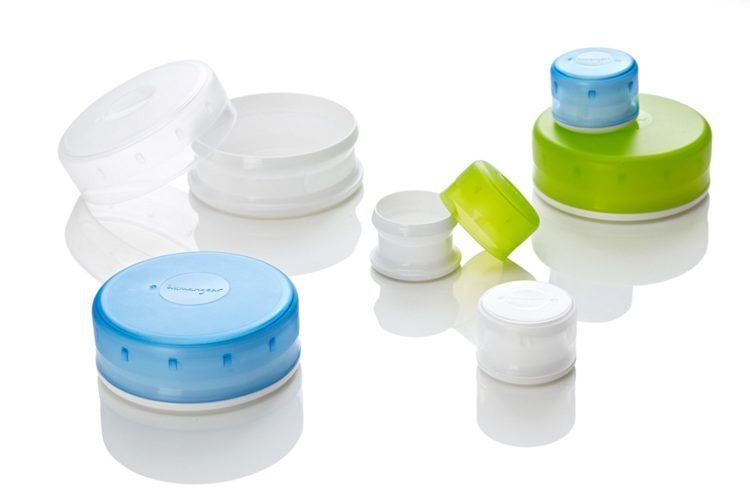
Be Smart About Your Travel Health Your first aid packing list is just one piece of the travel health puzzle. Particularly when traveling abroad, you should start by researching if there are any diseases that are common in that area. The CDC has an official traveler health resource to get you started on things like zika virus, malaria zones, etc. (although I find the UK version easier to navigate). For many destinations, especially in tropical countries and/or developing nations, you may also need to ask your doctor about travel vaccines. Read my complete guide to budgeting for travel immunizations . Lastly, it’s always a smart idea to purchase travel insurance which will help cover health care costs if you seek medical treatment abroad or if you need emergency help. I always purchase through RoamRight , but no matter who you choose, you should educate yourself about policy options .
The Most Important Tips for Your Travel Medical Kit
If you’ve got safe drinking water and health insurance and wash your hands often, that’ll get you most of the way there.
My last piece of advice when it comes to a travel first aid kit is to make sure it’s accessible! If you get a headache onboard an overnight flight but your first aid kit is in your checked suitcase, it does you no good.
Make sure what you need is easy to get to when you need it. That’s a mistake I’ll only make once!
* * *
DIY Travel First Aid Kit List
A first aid kit prepares you for illness, common injuries, and minor accidents. Homemade first aid kits can pack small to fit in suitcases, purses, or cars.
Instructions
Divide over-the-counter medications into small dosages to save on space.
I recommend restocking when you get home from a trip so you're ready to "grab and go" when you pack for the next one!
Recommended Products
As an Amazon Associate and member of other affiliate programs, I earn from qualifying purchases.
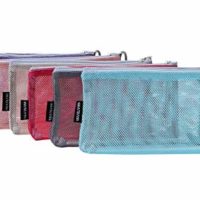
What’s in your travel medicine kit?
Is there something different in your carry-on first aid kit? Do you have other travel tips?
22 thoughts on “DIY: A Travel Medicine Kit Checklist That Fits in Your Carry On”
On every leg of air travel I wear a new paper mask covering nose and mouth. I put it on as soon as the plane doors close, removing it just long enough to eat and drink. Two reasons: 1- So I don’t catch the cold other travelers have; 2- Because the air is so dry on planes, I appreciate being my own humidifier.
Sounds like the perfect size kit. I travel with very little because I tend to purchase meds if I need them at my destination, but anti-diarrhea meds and nausea medications are two that I ALWAYS have with me. Since I lead tours, I can’t be feeling too ill to go out with the group! Those two things usually get me through the day, no matter how sick I am and then I can spend the night in the bathroom if need be, lol.
Before traveling, we prepare our bag with some essential things which we think can be used in journey and first aid bag with proper medication tools is one of those essential things, Make a list of all tools and check before leaving whether all tools present on the list are in the first aid bag or not, I think all tools mentioned in the above post cover everything, but I like the idea of bringing new paper mask, thanks céline bouchard for mentioning this idea in your comment.
Hi can I buy your bag?
@Sabina, What bag do you want to buy? You can make your own easily!
I also bring small scissors to cut the moleskin. One thing about first aid packing that is such a pain is the common recommendation to bring all prescription medications in their original containers, particularly for international travel. On the one hand, that is the safest in case you were to be detained or questioned, but on the other, it adds a lot of bulk to packing that otherwise could be reduced in size. What are your thoughts on that?
@LeRainDrop, Almost everyone I know packs their prescription meds in a pill box rather than original containers. I’d bring a paper detailing meds/dosages + physician’s name and phone number, just in case. (I’d be MORE conservative if you have highly controlled substances, like pain meds)
Thank you so much! I have a handful of prescriptions but no controlled substances, and I got the comprehensive letter from my doctor detailing all my medicines. I wish I found your site earlier, as I’m packing right now for an extended trip to Guatemala in two days, and your site provides a great wealth of info!
Thsis is great info. I’m packing for a trip right now, and will be including these items in my bag for sure.
This is a great list! I never leave home without a fully stocked first aid kit. You never know when the kids are going to hurt themselves.
@Audrey, Or the adults 😉
My wife is responsible for the kit in our family. I’m glad she is, I would have forgotten half of these things!
@Scott, I’d forget too without a list…
Great idea. I never seem to have the right things when I pack. Now I can just use your list and be prepared when we travel. .
Hi Becky, It was great to meet you at WITS17 this year. I always make sure that we have a first aid kit in our car, since we have four children and an accident prone dad of the house!
@Natasha, Pleasure to meet you also…great conference! Funny how sometimes it’s the parents who are more accident prone than the kids.
This is not exactly gear but: Don’t forget to call your wireless carrier to find out what options it offers for traveling wherever you are going. Accidental roaming can be very expensive, and most carriers offer options that are much more economical.
@Paula, Totally true! It’s best to have a set plan that works in your budget or buy a local sim card on arrival.
Pingback: 5 Easy Tricks for Making Your Summer Travel Less Stressful (Hint: Wine is NOT on the List) – A Third Life Crisis
I totally agree with you in that the things you need to pack in your first aid kit will depend on the place where you are going. It is important to understand what type of dangers you might be exposed to in order to have the best supplies on hand to avoid any serious accidents. We are planning on taking a camping trip in a few days and wanted to make sure we had the best first aid kit for the job, so I’m glad I found your page.
@Marcus, Hope your adventure was a success!
Excellent and honest post. I found this much useful information, as to what I was exactly searching for packing tips. Thanks for such post and please keep it up.
Leave a Comment Cancel Reply
Your email address will not be published. Required fields are marked *
Nomadic Matt's Travel Site
Travel Better, Cheaper, Longer
How To Pack A Professional Travel First Aid Kit
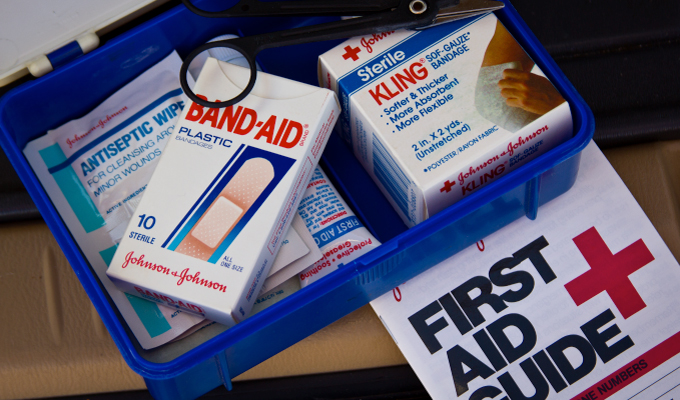
I get a lot of questions about health care on the road. Since I’m not a doctor, I don’t like giving medical advice beyond a few general tips so I’ve asked Mike Huxley, a registered nurse, to share his expert tips and advice when it comes to packing a first aid kit for your travels.
I have been traveling the world for over fifteen years now, and in that time I have patched up more travelers’ scrapes and sprains than I can remember.
Thankfully, pretty much all of the incidents I have dealt with so far have been minor. Even during my time spent volunteering as an expedition medic in the Sahara, the jungles of Kalimantan and Borneo, and many other amazing places, I have been able to deal with most accidents and injuries that have crossed my path.
I have only been able to do all of this, however, because I have always packed my trusty first aid kit. It has evolved and been refined over the years, but I have always carried one.
As any experienced traveler or health professional will tell you, things can and occasionally do go wrong on any trip , and taking a well-stocked kit with you is always advised.
When I first started traveling, I did what most sensible people do and carried a commercially available emergency first aid kit .
However, over the years, and with a lot of experience and my nursing qualification behind me, I have refined my own kit to reflect what I will use out on the road and what I know will make for a much better first aid kit for the average traveler too.
The best first aid kits are simple but varied and have a variety of dressings and equipment to deal with the basics. More importantly, they can be used with little or no training. So, what items should you include? Here are my picks for the essentials:
1. Band-Aids/Plasters It goes without saying that these are absolutely essential in any first aid kit. The most common form of minor injury is a cut or a graze, so it is always a good idea to carry a handful of Band-Aids in a variety of sizes .
If you think you will be doing a lot of trekking on your travels and you aren’t used to that form of exercise, then some blister plasters are a good idea.
It isn’t necessary to go overboard and carry so many you could start your own tiny field hospital; just a few of each type will do, as you can always restock when you pass a pharmacy.
2. Gauze Gauze is the medical jack-of-all-trades. I never carry a first aid kit without a supply of gauze in it, and I can’t tell you how many times it has come in useful over the years. It can be used to apply pressure to a wound, clean an injury, soak up blood, help stop bleeding, and even form part of a basic dressing for small-to-medium wounds.
A clean wound and a layer of gauze kept down with either tape or an adhesive bandage is often enough to allow time for you to go and get it looked at by a professional.
The best type of gauze to carry in a first aid kit is individually wrapped sterile squares. This eliminates the need to cut them to size when you need them quickly and obviously makes it easier to keep the wound clean and sterile.
3. Crepe bandages (ACE or elastic bandages) For when you have something a bit bigger than a cut, basic crepe bandages are useful for keeping small dressings clean and in place until you can get some medical attention.
Remember, you’re only going to use them in an emergency, until you can get some professional medical care (ideally covered through the travel insurance that you got in advance of your trip). You don’t need too many of these, just one or two at most.
4. Surgical tape Surgical tape is one of those essential emergency items for when you need to apply and secure gauze or a bandage to a wound, although Band-Aids can do the same job if need be.
5. Small scissors These come standard in any commercially available first aid kit (although you can buy them separately too) and are obviously useful for trimming gauze or bandages to size. Just be careful if you do carry scissors to ensure that your first aid kit goes in your checked bag when you are in transit or else airline security will take them off you.
If you’re flying carry-on only, small scissors (max 4 inches/10 centimeters) are permitted according to the TSA. If you want to be on the safe side, get ones with rounded tips. Also, remember that you don’t need to bring them from home — most grocery stores or stationery shops have them as well.
6. Tweezers Tweezers are another item that often comes standard in most first aid kits and can be useful for pulling out splinters, getting out little bits of stone or dirt when cleaning a wound, or any number of other practical uses.
7. Antiseptic wipes For some reason this tends to be the one thing most people overlook when thinking of first aid, but antiseptic wipes are an absolute essential in any good pack. No one wants a cut or wound to get infected, and antiseptic wipes are perfect for cleaning it before applying a dressing.
Just a small handful will suffice for most packs. Like most basic items, they are easy to replace at any pharmacy when you run low.
8. Condoms Apart from the obvious benefits (staying sexually safe), these handy little items can be used as emergency water carriers or even filled with ice as an emergency ice pack. I’ve personally never had any call to use them in that manner, but it is a handy bit of information to keep in mind.
9. Pain relief medication A small pack of basic acetaminophen (also known as paracetamol) or any of the associated brand names ( like Tylenol ) is usually sufficient, but ibuprofen or other similar medications are fine too. It doesn’t have to be fancy — basically whatever you normally take for pain relief when you have a headache or minor pain.
10. Loperamide tablets Also known under a variety of brand names such as Imodium , this is useful for stopping diarrhea for short periods when you need to catch a bus or train. Remember, these are for those emergency moments only when you are actually in transit, as they do not cure diarrhea and shouldn’t be used when you can rest up for a couple of days. (Normally the best way to treat diarrhea is to let everything pass through your system normally and drink plenty of water to replace lost fluids.)
If you use them sparingly, properly, and as directed on the pack, loperamide tablets can be useful additions to any travel first aid kit.
11. Antihistamine cream It happens to all of us on our travels: we get bitten by some form of insect and end up with a painfully itchy bump or rash. Don’t worry, the absolute majority of the time the bumps and stings aren’t anything to worry about at all, but they are damned annoying! This is why a good antihistamine cream is a useful addition to help control itching and swelling.
12. Antibacterial creams It’s also a good idea to carry antibacterial creams like Neosporin for any cuts and scrapes you get. This will help heal them faster as well as prevent any possible infections.
Obviously, this list can be tailored or added to depending on your trip needs (a tropical jungle trek will require different planning than a city break in Europe ). Any good first aid kit should also include any specific, individually prescribed medication or antimalarial prophylaxis.
For the majority of travelers, however, the items and kit listed above will cover the majority of basic incidents and accidents. You’ll also want to make sure you have comprehensive travel insurance as well to protect you against unexpected costs that you might incur should an emergency happen.
For any injury, illness, bang, or scrape that requires more than the basics and cannot be covered by the kit above, you should seek professional medical attention. Unless you are extremely far off the beaten track, you should be able to seek out professional assistance to deal with medical emergencies pretty easily if something happens you can’t handle yourself.
So go pack up your own little first aid kit and keep it stashed in your pack for emergencies. Odds are you will probably never use it — and I hope you never need to — but if you have one, at least you can enjoy your travels with peace of mind and be safe in the knowledge that you are prepared.
Important Note: When carrying any generic medication, it is essential that it is kept in its original packaging when you are traveling in case customs officials need to check it. The information provided here is for general travel health advice and information only. It is provided by a qualified nurse, but it is not a replacement for a personal consultation with a travel nurse specialist, your GP, or a doctor specializing in travel medicine who can tailor advice to your individual medical history and needs.
Book Your Trip: Logistical Tips and Tricks
Book Your Flight Find a cheap flight by using Skyscanner . It’s my favorite search engine because it searches websites and airlines around the globe so you always know no stone is being left unturned.
Book Your Accommodation You can book your hostel with Hostelworld . If you want to stay somewhere other than a hostel, use Booking.com as it consistently returns the cheapest rates for guesthouses and hotels.
Don’t Forget Travel Insurance Travel insurance will protect you against illness, injury, theft, and cancellations. It’s comprehensive protection in case anything goes wrong. I never go on a trip without it as I’ve had to use it many times in the past. My favorite companies that offer the best service and value are:
- SafetyWing (best for everyone)
- Insure My Trip (for those 70 and over)
- Medjet (for additional evacuation coverage)
Want to Travel for Free? Travel credit cards allow you to earn points that can be redeemed for free flights and accommodation — all without any extra spending. Check out my guide to picking the right card and my current favorites to get started and see the latest best deals.
Need Help Finding Activities for Your Trip? Get Your Guide is a huge online marketplace where you can find cool walking tours, fun excursions, skip-the-line tickets, private guides, and more.
Ready to Book Your Trip? Check out my resource page for the best companies to use when you travel. I list all the ones I use when I travel. They are the best in class and you can’t go wrong using them on your trip.
Got a comment on this article? Join the conversation on Facebook , Instagram , or Twitter and share your thoughts!
Disclosure: Please note that some of the links above may be affiliate links, and at no additional cost to you, I earn a commission if you make a purchase. I recommend only products and companies I use and the income goes to keeping the site community supported and ad free.
Related Posts
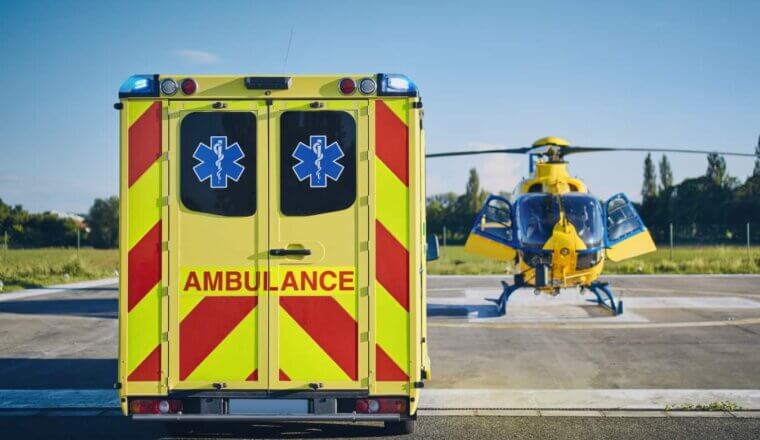
Get my best stuff sent straight to you!
Pin it on pinterest.
View by Category
- Explore Henryford.com
Sign Up for Newsletter
Health and wellness tips delivered right to your inbox
All fields are required
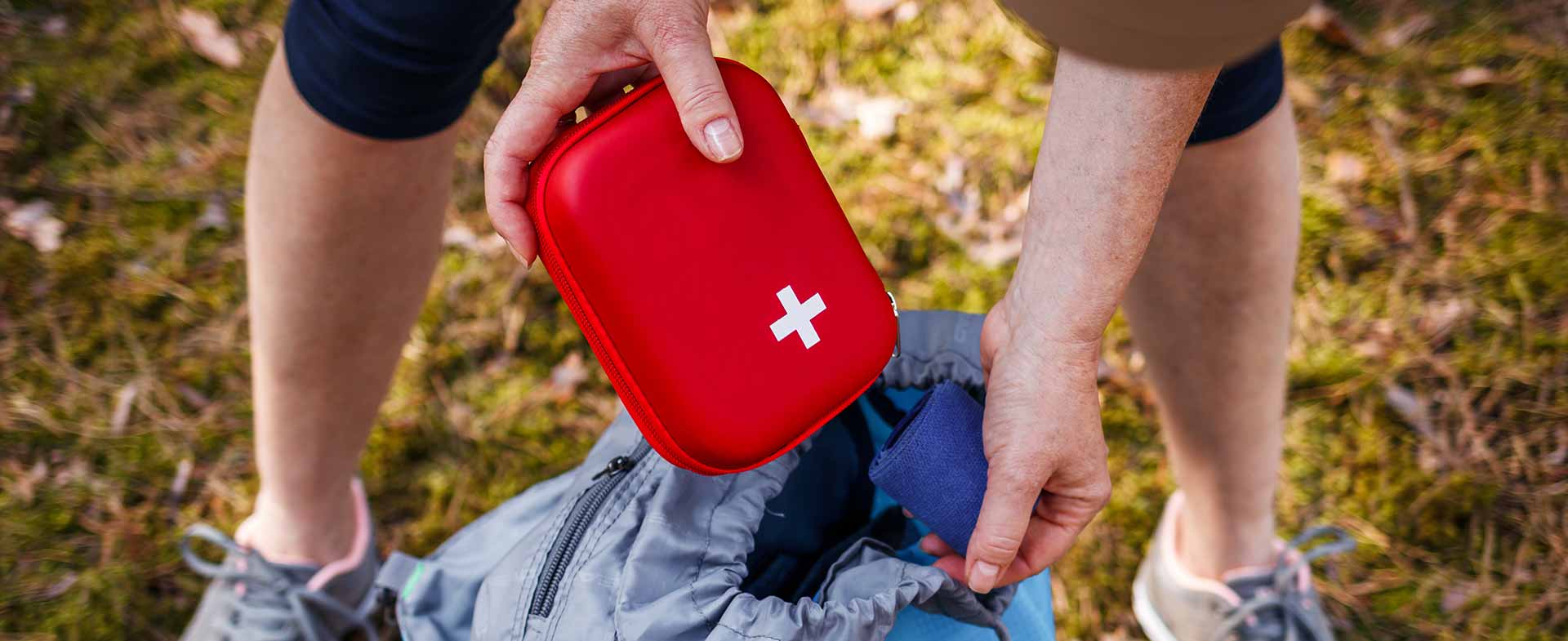
10 Essentials To Keep In Your Emergency Travel Kit
When the weather warms up, it's not uncommon for families to hit the road. When you’re heading out of town on a summer road trip, it’s important to keep safety top of mind.
"When it comes to road safety, thinking ahead is critical," says John Snider, M.S., an emergency preparedness coordinator at Henry Ford Health. The best way to prepare: Keep an emergency kit that's stocked with essential supplies in your car (not in your hall closet or sitting by your front door).
Roadside Safety Essentials
Getting out on the open road is good for both body and soul. Unfortunately, if you get injured while you're road tripping and you aren't prepared with on-the-spot first-aid supplies , all bets are off.
So, before you head out on that epic adventure, make sure your car is equipped with key emergency items:
- Antihistamines: Allergies can be brutal in the spring and summer. Stock your kit with antihistamines (non-drowsy formulations if you're driving). And if you or a family member has severe allergies, make sure you travel with an EpiPen.
- Blankets: Whether it’s hot or cold outside, blankets are remarkably handy, both for keeping warm and for sitting on. If traveling through desert climates, keep in mind that temperatures can drop up to 30 degrees cooler at night. "You can even purchase compact blankets that look almost like aluminum foil," Snider says. "They're great at conserving heat and they take up almost no space."
- First-aid kit (premade): While premade kits probably don't have everything you need, they do tend to cover the basics — things like gauze, tape, antibiotic ointment and alcohol pads. The caveat: "Don't buy an elaborate premade kit if you don't know how to use the items in it," Snider says. "Focus instead on simple kits with things like topical antibiotics and Band-Aids."
- Flashlight: Keep a flashlight in your car, and make sure it has good batteries. "If you never check the batteries, your flashlight might be useless when you need it most," Snider says. Want a backup? Glow sticks are a safe and effective way to alert people where you are. You can even throw a couple on the highway so other motorists can see you.
- Insect repellent: Insects make their seasonal debut beginning in spring. To protect yourself against mosquito and tick bites , pack insect spray in your kit (one that contains 30% DEET).
- Phone charger: If you get stranded on the side of the road, or stuck in seemingly endless traffic, a phone charger is a must. Not only will you be able to call for help when you really need it, but you can also keep your loved ones informed.
- Medications: When you're driving, the most likely ailments are upset stomachs and headaches. Make sure your kit is equipped with antacids, antidiarrheals, motion sickness medication (like Dramamine) and pain-relieving medication, such as acetaminophen and ibuprofen. And if someone in your family requires daily prescription medication, make sure you bring extra pills along for the ride.
- Sunscreen: Staying sun safe is always important. Keep sunscreen stashed in the car for sunny days. Your best bet: a broad-spectrum formulation (SPF 30 or higher) that protects against both UVA and UVB rays.
- Tweezers: Tweezers can come in handy for all sorts of mishaps, from splinters to ticks. Make sure you have a pair stashed in your kit or in the glovebox.
- Water: As the weather warms up, staying hydrated is critical to avoiding heat-related illness and dehydration. Having bottled water on hand can help you get sufficient fluids. It's also great for cleaning a wound and rinsing off grimy hands.
Stay Safe Strategies
When you're traveling by car, try to view your car as a safe haven where you can recharge and keep yourself safe from the elements. Spending time on the road can be a grand adventure — as long as you're prepared for mishaps.
Once you assemble a solid emergency travel kit, you can use it for months, provided you refresh supplies and always tote fresh water. Most items in the kit don't expire, so all you have to do is make sure you have fresh batteries when you hit the road.
"The biggest thing you can do to stay out of trouble is keep your head up and keep your eyes on the road," Snider says. "Most important, do not text while you're driving."
To find a doctor at Henry Ford, visit henryford.com or call 1-800-436-7936 .
John Snider is an emergency preparedness coordinator for Henry Ford Health.


Cookie Consent
We use cookies to improve your web experience. By using this site, you agree to our Terms of Use . Read our Internet Privacy Statement to learn what information we collect and how we use it.

Based on Zip Code Change
- Shop the Red Cross Store
Survival Kit Supplies
- Share via Email
- Share on Facebook
- Share on Twitter
- Share on LinkedIn
Being prepared means being equipped with the proper supplies you may need in the event of an emergency or disaster. Keep your supplies in an easy-to-carry emergency preparedness kit that you can use at home or take with you in case you must evacuate.
Take the short quiz below to test your knowledge, then scroll down for our full list of recommended supplies.
What Do You Need In A Survival Kit?
- Water: one gallon per person, per day (3-day supply for evacuation, 2-week supply for home)
- Food: non-perishable, easy-to-prepare items (3-day supply for evacuation, 2-week supply for home)
- Flashlight
- Battery-powered or hand-crank radio (NOAA Weather Radio, if possible)
- Extra batteries
- First aid kit
- Medications (7-day supply) and medical items
- Multi-purpose tool
- Sanitation and personal hygiene items
- Copies of personal documents (medication list and pertinent medical information, proof of address, deed/lease to home, passports, birth certificates, insurance policies)
- Cell phone with chargers
- Family and emergency contact information
- Emergency blanket
- Map(s) of the area
After you gather those basic supplies for your kit, add unique things each member of your family may need, such as:
- Medical supplies (hearing aids with extra batteries, glasses, contact lenses, syringes, etc)
- Baby supplies (bottles, formula, baby food, diapers)
- Games and activities for children
- Pet supplies (collar, leash, ID, food, carrier, bowl)
- Two-way radios
- Extra set of car keys and house keys
- Manual can opener
Depending on the types of disasters that are common where you live , also consider adding these things to your kit:
- N95 or surgical masks
- Work gloves
- Tools/supplies for securing your home
- Extra clothing, hat and sturdy shoes
- Plastic sheeting
- Household liquid bleach
- Entertainment items
- Blankets or sleeping bags
Be Red Cross Ready
Anatomy of a First Aid Kit
Make a Disaster Plan
Be Informed
Help people affected by disasters big and small.
Writing From Nowhere

Just In Case Travel Kit List (19 Essentials)
- June 5, 2021
- 16 Comments
Most of the *ultimate travel packing lists* focus on the fun parts of travel. The bags, the gear; the stuff that’s exciting to think about and buy. This travel kit list is full of the other stuff you need to take traveling. Consider this your just in case travel kit that everyone hopes they won’t ever need.
But, that doesn’t mean it can’t be fun! Whether you’re backpacking, on a road trip, city-hopping or traveling full-time, these are the essentials for your travel packing checklist.
This emergency travel packing list will help you to be more prepared, resilient and result in a more enjoyable trip. I affectionately call this just in case travel kit my travel “headquarters,” and it has saved the day countless times. Pack the items on this travel kit list, and I’m sure it will bail you out, too.
Taking time for travel preparedness isn’t just good common sense, but it’s also an essential part of being a more sustainable traveler . Being able to repair a buckle or mend a shirt mid-trip will reduce your need to purchase new gear. If you have the means to fix things when they break, you save items from the landfill and also the resources and carbon footprint of buying a new product to replace it.
Extending the life of your gear stops you from having to send your old gear to the landfill, and also saves you money. Being prepared for traveling is a win all around!
This is my personal travel emergency kit list, and you’ll probably be able to tell that I love being prepared. If you’re thinking about the just-in-case items you need for a trip, use my travel kit list as a guide and take or leave items as they suit you.
Let’s get right into the travel essential packing list that will help you be prepared for whatever travel throws at you.
Pause now and pin for later!
Just In Case Personal Items

1. Vomit bag
I truly hope you’ll never need this vomit bag, but if you feel even a little queasy you’ll be so thankful to have on hand. No trip packing list is complete without this.
Just because you’ve never been motion sick doesn’t mean that it will never happen. Personally, I’ve never been car sick in my entire life, until riding in a van up tiny hairpin roads through high elevation in Peru. The changing altitude got to me, and I’ve never felt that sick to my stomach in my life.
Remember that food is also a wild card – your stomach may not be used to the cuisine wherever you are, plus not every country has laws around food ( “does this taste old to you?” ).
I met a Canadian man who had been vomited on while traveling – by people he didn’t know – twice. TWICE! * shudders * Let’s all agree to carry vomit bags so that if we cross paths somewhere in the world, we don’t accidentally puke on each other.
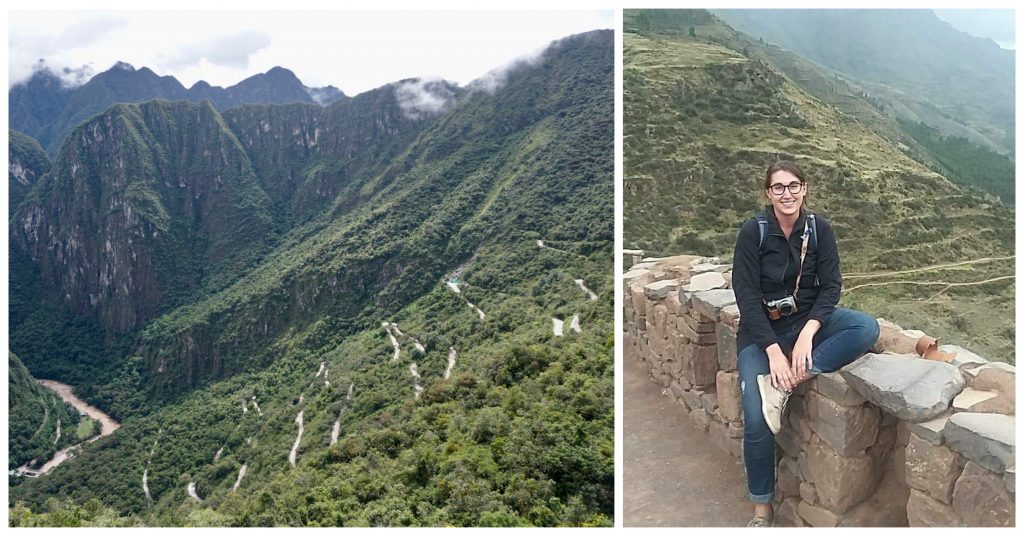
Beyond your just in case travel kit, I actually recommend you sneak a vomit big into your messenger bag, bookbag, purse, etc. for daily emergencies. It takes up no space, but if it’s needed, it will save the day.
Any paper bag will do. If you’ll be flying for your next trip, take some from the plane. Vomit bags should be in the seat-back pockets or you can ask a flight attendant.

2. Dramamine
You need this item in your travel kit list for the same reasons as the vomit bag. Just remember to store it somewhere reachable , not in a bag that you’ll be stowing away under the bus, train , or aircraft.
Anyone who is prone to motion sickness pack a bottle in their just in case travel kit. For the rest of us blessedly strong stomachs, just take a few tablets as a backup.

Dramamine Chewable Tablets – 8 Pack on Amazon
3. Toilet paper
Not all countries provide free toilet paper in bathrooms like a lot of us are used to.
Even in the US, I’ve seen some pretty ragged rest stops that weren’t stocked ( I’m looking at you, latrine on the southern border of Arizona that hadn’t seen any love in an unseemly amount of time ).
When you’ve gotta go, you’ve gotta go, toilet paper on hand or not, so be prepared.
If you’re going on a long trip, I would take a whole roll (squish it flat and store it in a ziplock bag to keep it clean). For a smaller trip, enough for emergencies should be fine.
4. Hand sanitizer
It’s not the norm everywhere to wash hands after using the bathroom. I’ve seen many bathrooms that don’t provide soap or have running water.
If it’s your personal norm to do so, then you’re going to want hand sanitizer. Start every trip with a travel-size bottle and buy more along the way if you have to.
Also, if you’re in the position to spend a little bit more money, choose a cruelty-free and vegan hand sanitizer to make a more conscious purchase.

Vegan, Cruelty-Free, Eco-Friendly Hand Sanitizer on Amazon
5. Liquid IV
It takes constant, intentional effort to stay hydrated when you travel. In my humble opinion, conscious hydration is one of those hidden-gem travel trips that can help you really improve your health and wellbeing. Bring a little help in the form of Liquid IV.
Liquid IV is an electrolyte powder that provides rapid hydration. It contains glucose, sodium and potassium that “delivers water and other key nutrients directly to your bloodstream, hydrating you faster and more efficiently than water alone.” (more product specifics can be found here from the company themselves )
This is a miracle powder. Staying intentionally hydrated will make you enjoy traveling more. In particular, this will save you during long-haul bus rides or flights, while hiking, or emergencies like plain old dehydration.
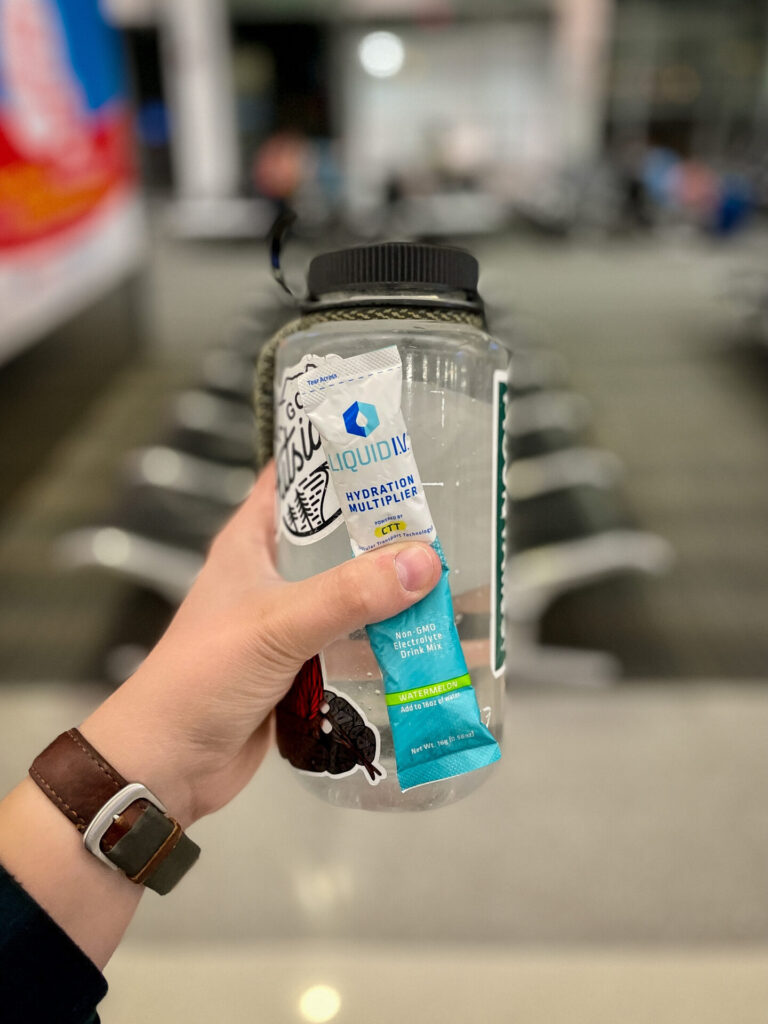
Reflecting on my own travel memories, there are so many times when I know I would’ve felt better and enjoyed my surroundings more if I hadn’t been so dehydrated.
The worst offender was a long bus ride from Lima to Cusco in Peru. It was supposed to be about 18 hours, and usually, buses make stops along the way. This bus, for whatever reason, didn’t. And there had been a landslide which required the bus to slow down and carefully drive over the rubble, so instead of 18 hours, this bus ride took 27.
I only had one bottle of water on the trip, and I felt so deeply *wrong* by the time we arrived. I only peed once in 27 hours. Not drinking water or using the bathroom makes you feel terrible and has health implications.
Tuck a few Liquid IVs into your just in case travel kit and you’ll be happy you have them.

Liquid I.V. Hydration Multiplier Electrolyte Powder on Amazon
6. First Aid Kit
There are two types of first aid kits you should have for traveling. The first is a small kit for shorter trips, or for traveling in places where you’ll never be far from help. For example, it’s probably overkill to pack a splint for just a weekend in Paris, where help could arrive very quickly if an accident were to occur.
I am not a certified first aid expert, so you should consult the American Red Cross’s recommendations for further safety information.
First Aid Items For Short Trips
What I recommend: take a full first aid kit on long trips, but for a week or less, just take the basics ( except for outdoors-focused trips, in which case you should always take a fully loaded first aid kit ).
Here are some health-focused items for your travel kit:
- Multiple sizes of bandaids
- BleedStop , a powder that you pour into cuts or wounds to stop bleeding
- Alcohol cleansing pads
- Benadryl to treat allergies and itches
- Moleskin for blisters
- Antibiotic ointment for treating cuts, burns and reducing the risk of infection
- Bandage tape
- Liquid IV (for dehydration, diarrhea/food poisoning, etc.)
- Wound closures – this may sound intense, but they’re so tiny and they work so well at closing cuts
- Small scissors – for cutting gauze, Moleskin, or (in extreme cases) clothes off
First Aid Items For Long Trips
Just so you know: this list does not include every single first aid item you should include on your travel kit list. My kit has more than 100 pieces in it, and this is just covering the highlights. You should refer to the American Red Cross for professional advice. Especially if you’ll be in a scenario where help would be delayed ( such as on a boat, in the backcountry, etc. ).
- Medical gloves
- Surgical mask – you can buy these in the first aid section of most stores, or even get them for free during flu season. If you’re going anywhere with volcanoes or a chance of earthquakes or wildfires, you should take one. Filling your lungs with ash or dust is painful and damaging. Individually-wrapped is best
- A Sam Splint for stabilizing sprains and bone breaks
- Foil thermal blanket
- Instant ice pack
- A Sharpie for extreme scenarios in the backcountry. In the event that two people are in the backcountry together and one of them incurs a life-threatening injury and is unable to move, their partner may have to leave them to seek out help. A Sharpie is used to write information on the injured person, in the event that they lose consciousness and are discovered by someone else. If you’re going into the backcountry, you really must prepare by taking the American Red Cross Wilderness And Remote First Aid Course .
Personally, I love first aid and preparedness ( am I the only one? Do you also get a kick out of being prepared?? ). But if this seems like too much work, you can buy a premade safety kit and add any additional pieces yourself to flesh it out.
Pro tip: if you assemble your emergency kit yourself, be sure to opt for travel-size first aid items. It’s not as cost-effective, but larger volumes of liquids will become a hassle going through airport security. You can store everything easily in a small toiletry bag.

163 Piece Waterproof Portable Essential Injuries on Amazon
Just In Case Travel Kit: Practical Items
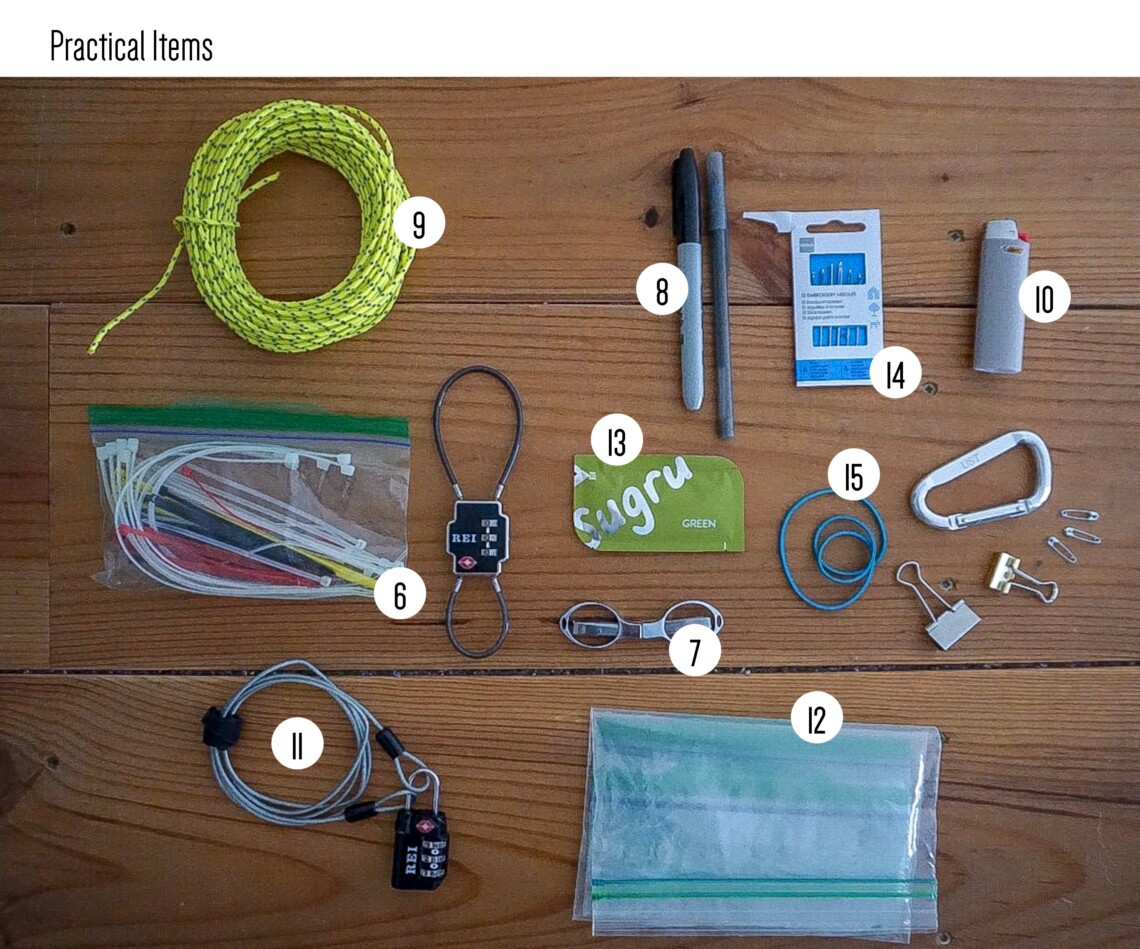
7. Zipties in an assortment of sizes
These are great for MacGyvering broken items.
A zip tie can become a makeshift shoelace, zipper pull, bag handle – you get it. Endlessly handy to have.

Assorted Zipties on Amazon
8. Small scissors
If you take scissors, you will find yourself using them. It’s just one of those things! Personally, I like actual scissors over a pocket knife, but a knife will probably tick this box as well in many situations.
Plus, as I mentioned in #5, scissors are an essential part of a complete first aid kit , useful for cutting clothing, gauze, bandages or Moleskin.

Portable Mini Fold-Up Scissors on Amazon
9. Pen and marker
These might be items you don’t think you’ll need, but if you end up do needing to write something down and don’t have anything, you’re out of luck.
You’ll need a pen to fill out any customs forms if you’re going abroad. A marker is handy for labeling your food in a hostel kitchen.
10. Paracord
Paracord is handy in mending broken items, or making something new altogether – I have 2 friends that built a makeshift tent out of tarp and paracord when they couldn’t find a hostel for the night. For bonus travel preparedness points, consider bringing a roll of reflective paracord . After a camping snafu where I tied up a bear bag in a tree and then couldn’t find it, I now use the reflective paracord to help mark things.
That can be a bear bag, the entrance to the campsite, small items that are easily overlooked and left behind when packing.
When doing a lot of bus travel, it can also be handy to tie reflective paracord to backpack . This makes it easy to spot when unloading a bus in the middle of the night or trying to describe your bag to the person returning luggage.

Fluorescent Reflective Paracord on Amazon
11. Lighter
Even if you’re not a smoker, it’s just one of those basics that is good to have. If you do smoke or use a lighter often, consider getting an electric lighter and making it the last lighter you’ll ever need.
That’s right, locks plural! I recommend taking two locks on every trip.
Combination Lock and Cable
The first lock that you need in your just in case travel kit is a standard combination lock with a cable . Reduce your odds of being robbed by keeping your backpacks together. This is handy if you have to sleep somewhere public (like an airport) or if you, for some reason, have to leave your bags behind.
By tying bags together, you make it much more unlikely that an opportunist will come up and discretely walk off with your bag.
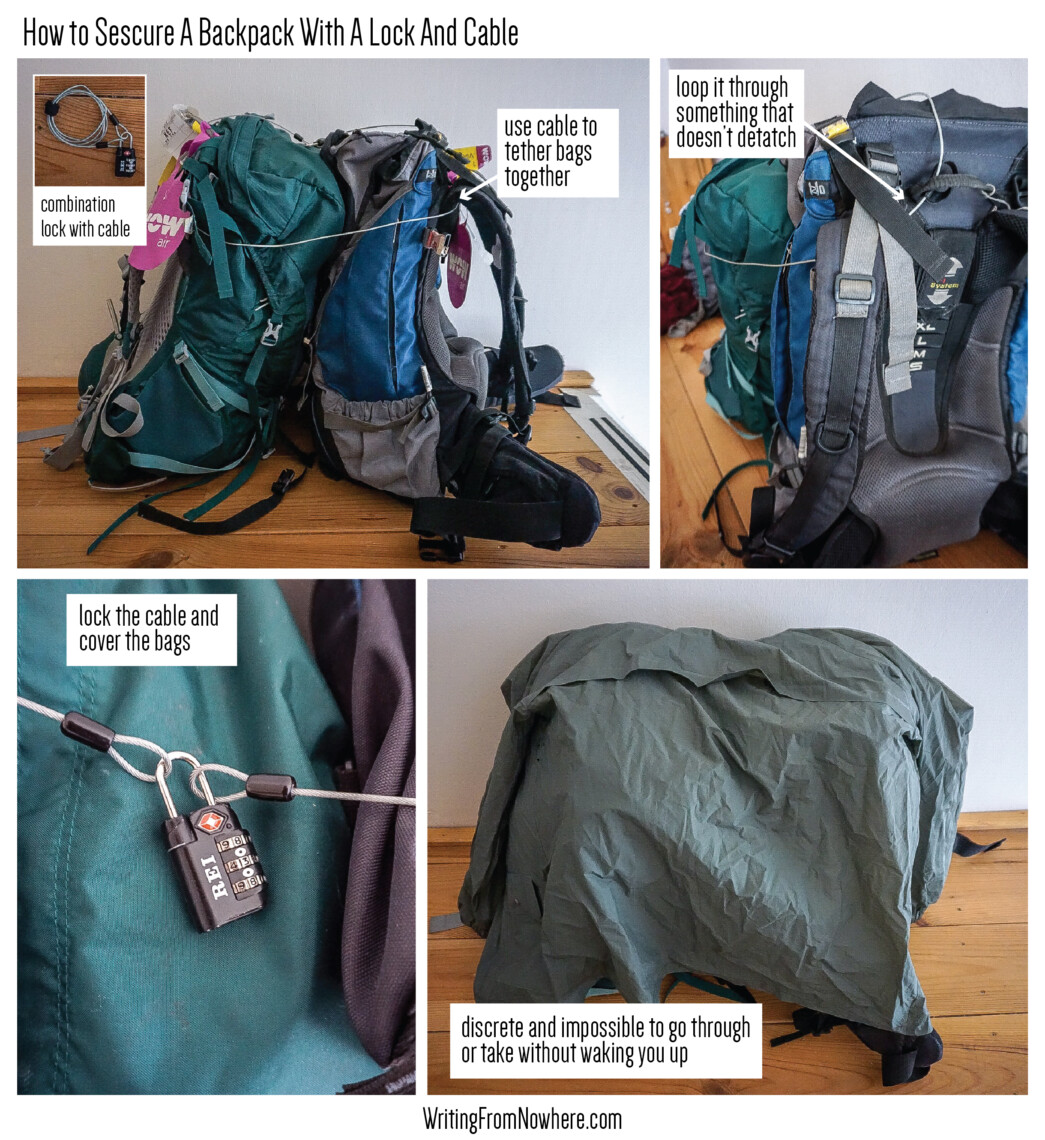
Take a cable lock around both packs, going through zipper pulls or handles to make sure it’s actually connected, then put the ends of the cable on the lock and lock it.
Then, throw a raincoat over the top of the packs for discretion.
If someone came over while you were sleeping, just the sound of pulling the jacket off would probably wake you, but there’d be no way to quickly take off with huge packs tethered together.
This may sound intense to some travelers, but I’ve had my room rummaged through and robbed before so I’ve made it a habit to be proactive. That’s a good quality for anyone who wants to travel long-term .

Combination Lock With Cable on Amazon
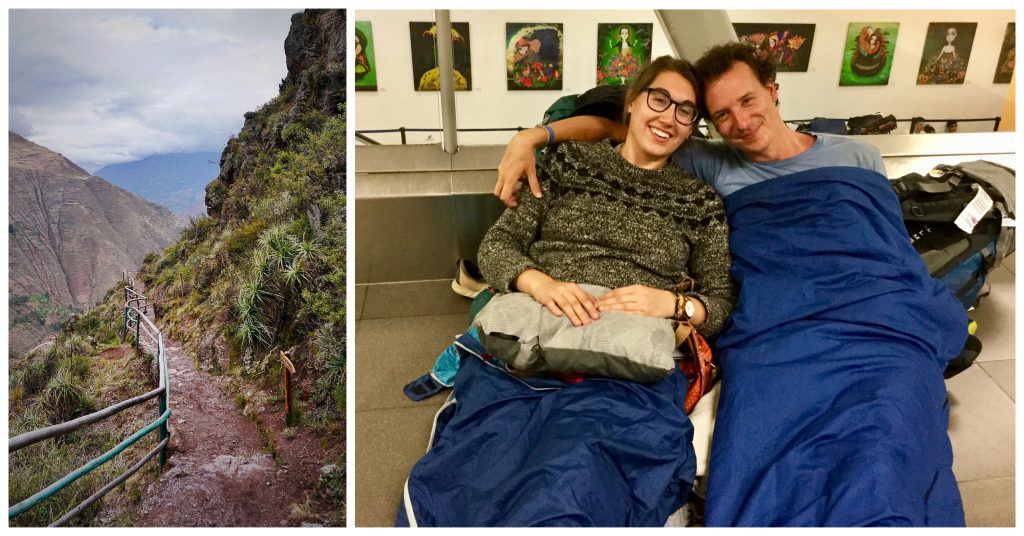
Double-Sided Cable Lock
The second lock you should always include in your just in case travel kit is a double-sided cable lock .
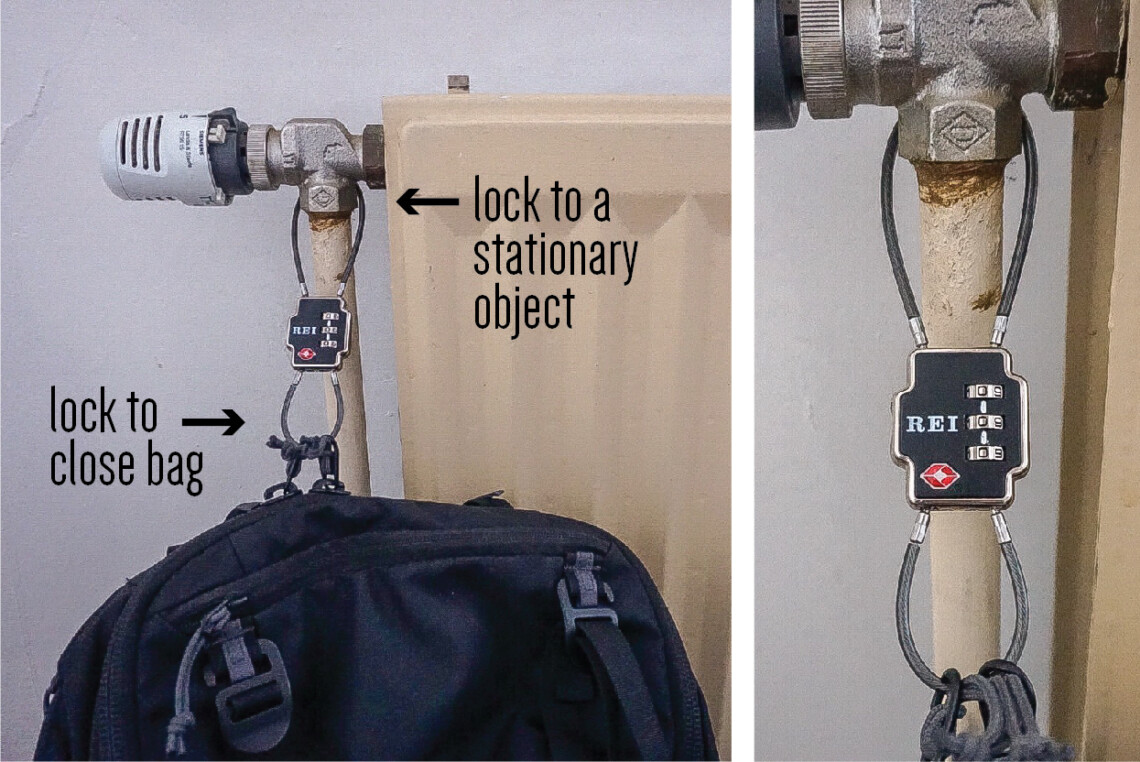
First, you lock your bag shut so no one can go through it. The cable is flexible, so if your bag doesn’t have those luggage pulls with the lock holes in it, you can still get it through.
Next, you lock the longer loop through something else , like your seat or the overhead luggage rack, making it impossible to swipe. With this, no one can rummage through your bag or walk off with it.
With enough time and tools, a thief could still cut your bag, etc. but this is a great deterrence for opportunists.
You can find a double-sided cable lock here . If you’d like more on this topic, I have an entire blog piece on just securing your packs .

Lewis N. Clark Lockdown Triple Security Double-Sided Cable Lock on Amazon
13. Ziplock bags in an assortment of sizes
In your day-to-day life, it’s best to avoid Ziplock bags because of the plastic epidemic, but they’re invaluable when on the road. Take an assortment of sizes.
Some of the best uses : water bag to seal off your electronics during a rainstorm, taking food to-go, “packing out” toilet paper if you’re going to the bathroom in the woods, keeping your liquid toiletries separate from everything else in your bag in case something leaks. That list goes on and on.
You don’t need anything fancy, just something that could maybe repair a broken plastic piece of your pack or reattach the bottom of your shoe.
It’s an unusual travel accessory, but Sugru glue is the glue for the job. It’s super versatile: it’s flexible, mouldable, waterproof and small to carry with you.

This glue is so amazing that I even included it on my holiday gift guide . Glue is a ~super cool~ gift when it does THIS much!

Sugru All-Purpose Adhesive on Amazon
Pro tip: if you add another type of glue to your travel kit list, be sure to store it in a little Ziplock bag. Sugru is individually wrapped, but a liquid glue that’s just in a tube presents a leakage risk. That would be disastrous!
15. Mini sewing kit
This is worth its weight in gold if (when) you a tear in your clothes. You don’t need to be a skilled seamstress, just being able to sew up a hole or reattach a button is immensely useful and can save you from needing to buy new clothes.

Compact Sewing Kit For Travelers on Amazon
16. Rain Gear For You And Your Backpack
“What do weathermen and politicians have in common? They both get paid to lie.” My grandfather told me that joke probably a thousand times while I was growing up.
There’s a lesson to be learned in there though: never rely on the forecast to be accurate.
Your just in case travel kit isn’t ready without some rain gear. It doesn’t have to be bulky or heavy-duty. My rain suit is essentially just a glorified garbage bag, but it’s been keeping me dry for years. I recommend something packable that folds into a little pouch and disappears into your bag until you need it.

Packable Women’s Waterproof Hooded Rain Windbreaker on Amazon
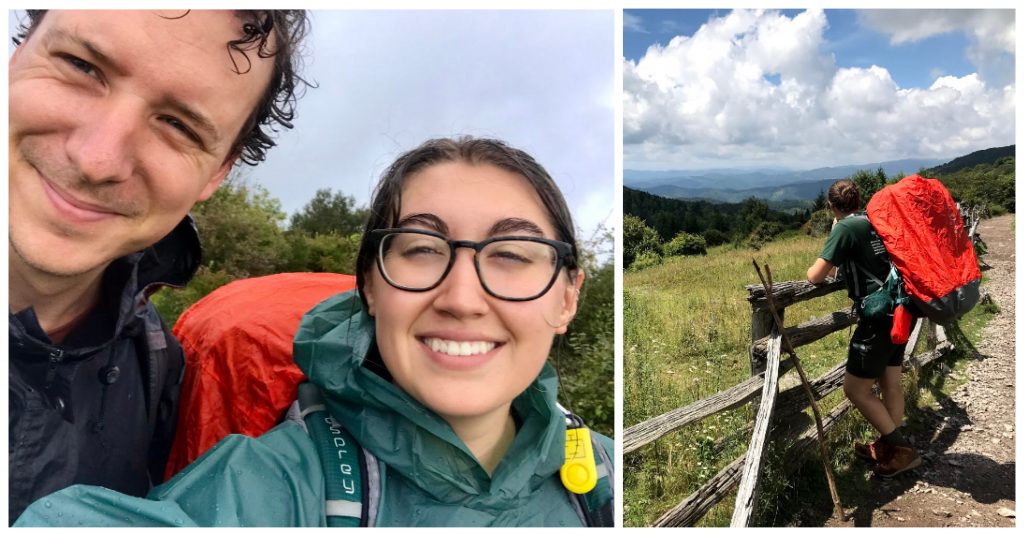
Now that you’re covered, don’t forget your bag! A wet bag is inconvenient, smelly and I reckon expensive if anything gets ruined and needs to be replaced. Your just in case travel kit isn’t ready with a rain cover for your bag as well as your body.

Waterproof Backpack Rain Cover on Amazon
Pro tip: test your raincoat while you still have the opportunity to return it! Make sure it’s truly waterproof, and not just water-resistant. This is particularly important if you’re traveling during a country’s rainy season.
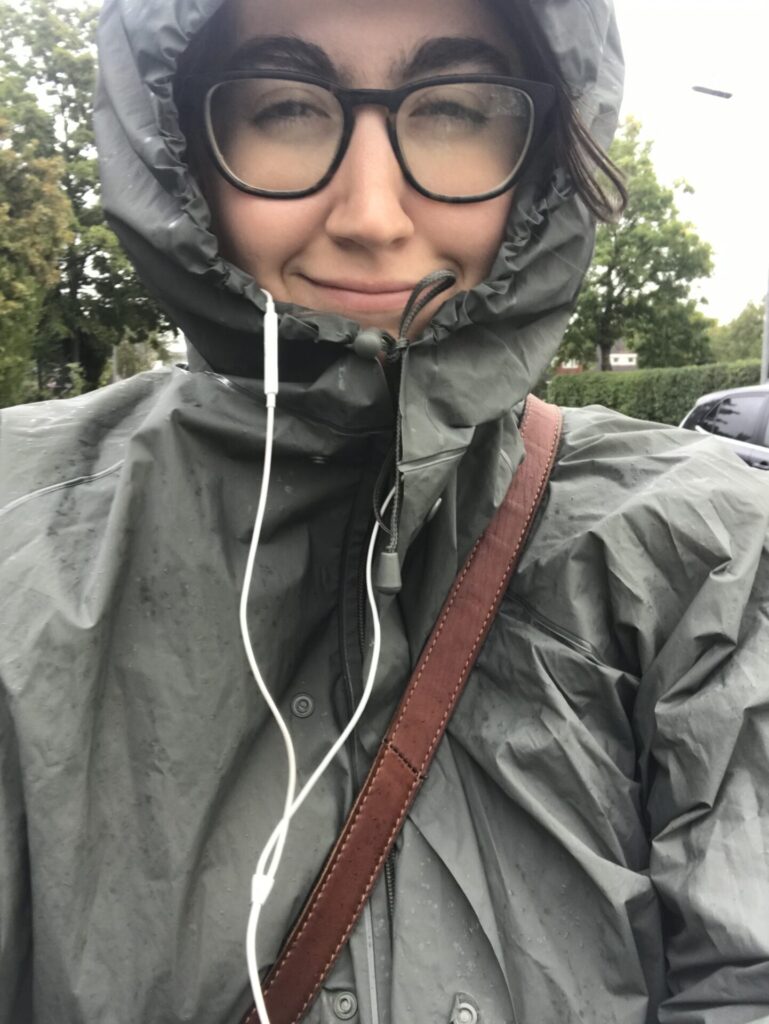
17. Whistle
There are two primary travel and outdoor scenarios where a whistle is extremely valuable.
The first is situations where you’re lost or injured and need to draw attention to yourself. You can blow on a whistle for hours without losing your voice or dehydrating yourself, unlike yelling for help. The internationally recognized distress call is 3 blows of a whistle. If you’re hiking, attach this to the shoulder strap of your backpack so that if you’re injured and unable to move, you can lean to your shoulder and blow the whistle even if you’re trapped or badly injured.
The second is when faced with animal or criminal confrontations. A whistle is like a personal security alarm that will draw attention to your situation. This can potentially scare off criminal encounters or aggressive animals.
In addition to carrying a whistle on your backpacking shoulder strap, carry one in your purse, messenger bag or whatever you always keep on your person while traveling.

Emergency Whistle With Lanyard on Amazon
An exciting step of preparing for traveling is getting the local currency of your exciting destination. In addition to your day-to-day money, you’ll also want to keep a reserve of extra money for emergencies and unexpected situations. Here are 3 steps to take to effectively prepare yourself.
Take a reserve of US dollars for most destinations (except in Europe – it’s unlikely anyone will accept dollars). Not only is the US dollar accepted by many countries worldwide, but it’s also required at some international checkpoints. I learned this the hard way when crossing the border from Honduras to Nicaragua. Neither country used the US dollar as their currency, yet it was the only accepted currency to pay the entry fee with.
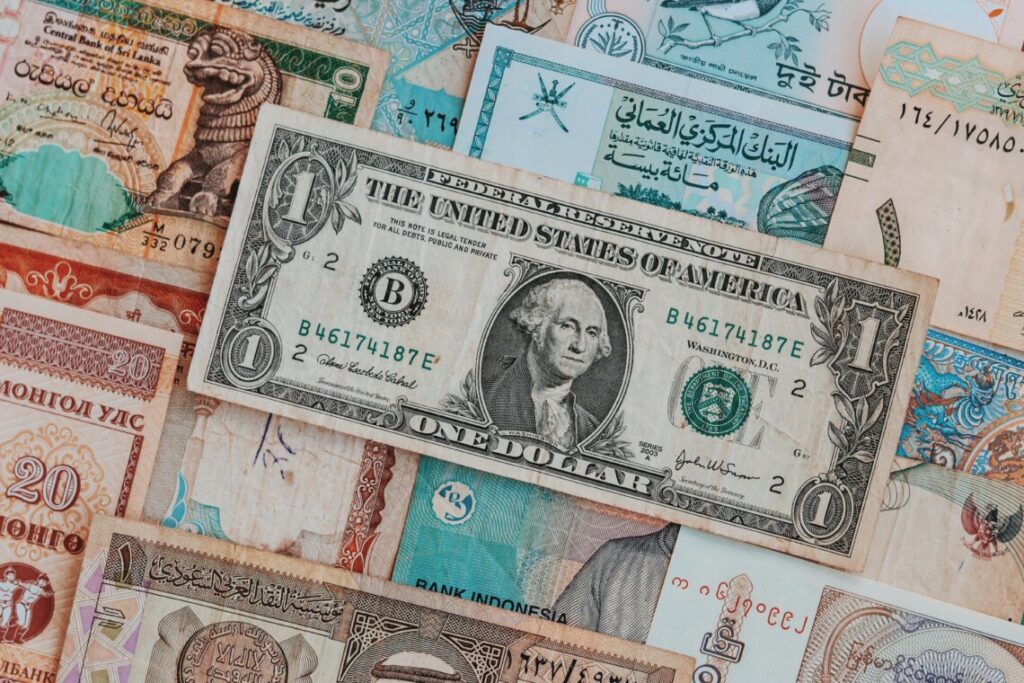
A proactive amount of money to take for 2 people is $300. Don’t take big bills, because you might not be able to get change. Take a division of ones, fives and tens.
Only take clean bills . Bills with writing or tears may very well be rejected because they won’t be accepted by the local banks. American banks will accept anything, but that’s not the case abroad. Whoever is accepting your money also needs to feel confident that it’s not counterfeit, and a dollar bill with a woman’s phone number written on it doesn’t exactly ooze that confidence.
Scatter the bills between your bags , and never carry this around in your day-to-day exploring. You tempt fate when you carry large amounts of cash on you will perusing the streets.
Most people who travel long enough have had their bags rummaged through by opportunists, so make it difficult for someone to find your cash reserve. Split up your money and store it any number of random places in your bag:
- In the toe of your packed shoes, beneath socks and other stored items
- Tucked into your first aid kit
- Taped inside of a notebook
Pro tip: do *not* take big bills. Take an assortment of small bills instead. Getting change for small bills is a common problem in some countries, even for the local currency.
19. Miscellaneous Items For Your Just In Case Travel Kit
These are items that have just come in handy and are small enough to toss in.
- Carabiners in assorted sizes
- Binder clips in assorted sizes
- Rubber bands in assorted sizes
- Safety pins in, you guessed it, assorted sizes!
Don’t pack the whole container of these items, but rather take a few of each out and store them in a small Ziplock bag.
Putting Your Just In Case Travel Kit Together
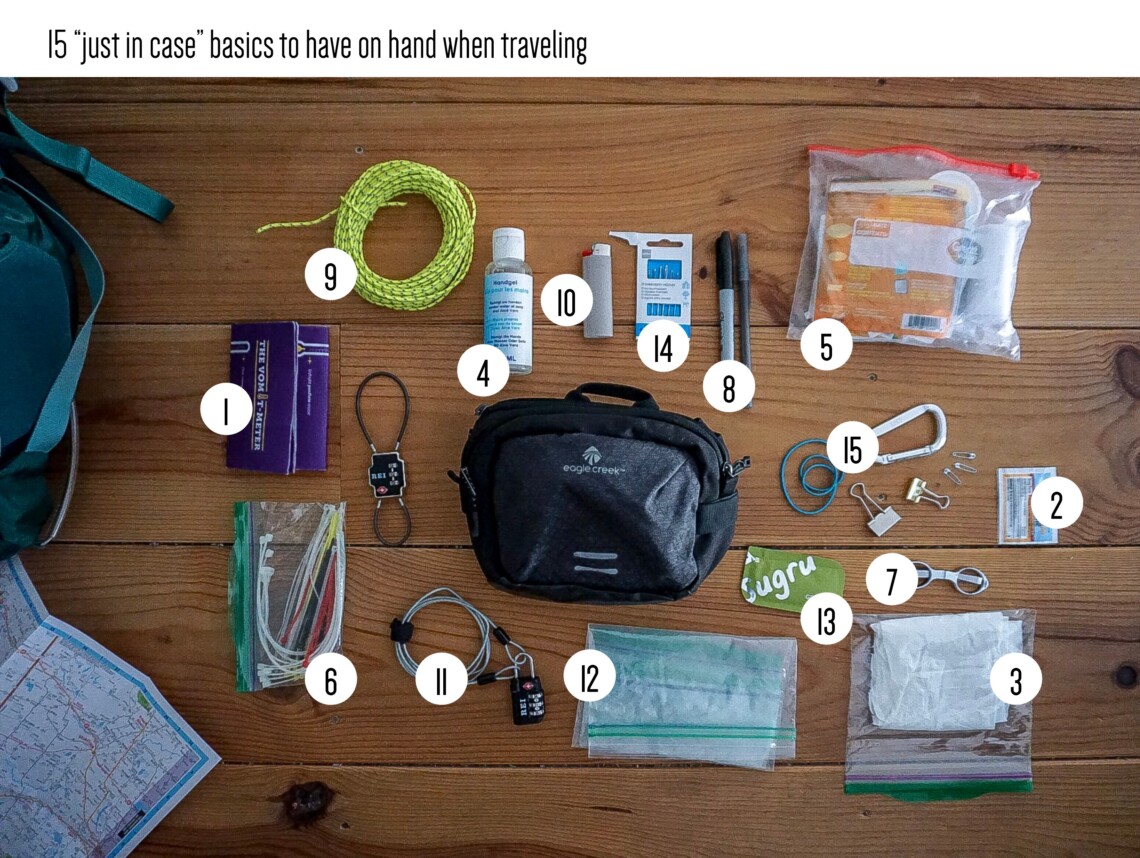
Your travel preparedness items should all be stored together in a pouch or a small packing cube and stored in an accessible area. If you’re traveling with a backpack , keep it in the brain, or the topmost part of your pack, so that it can be easily reached .
On smaller trips with just a day bag, toss this into the abyss of your bag.
Travel Kit List Summary
Do you feel more prepared with this travel kit list in hand? This travel checklist will become your saving grace when you’re on the road, and I’m so thrilled I was able to share it with you.
This list is about more than just providing you ultimate packing tips – it’s about being savvy, staying safe and being resilient to what life on the road throws at you.
What items do you include on your backpacking or vacation packing list? I’d love to hear in the comments!
16 Comments on Just In Case Travel Kit List (19 Essentials)
- Pingback: 4 Things to Pack if You’re Nervous About Overnight Bus or Amtrak Travel – Writing from Nowhere
- Pingback: 2 Techniques For Securing Your Backpack While Traveling – Writing from Nowhere
- Pingback: Honest Amtrak Review: 4 Things You Should Expect – Writing from Nowhere
- Pingback: How to Get Fresh Food While Backpacking or Traveling: 4 Things To Pack – Writing from Nowhere
- Pingback: The Packing List: The Perfect Suitcase for 10 Days in Israel - Donna Colori
- Pingback: The Packing List: The Perfect Suitcase For Travelling 10 Days in Israel - Donna Colori
- Pingback: Lista de Viagem: O Que Levar na Mala Para Israel - Donna Colori
- Pingback: Sustainable Travel Packing List - Writing From Nowhere
incredible! i thought i was reading my list! everything that i have been told is quirky, is on this list. i have everything on my list too! except Sam Splint, Foil thermal blanket,Instant ice pack,A whistle,A Sharpie, possibly casue we are not big hikers. but everything else is there. if i dont use it after 3 trips, an item gets removed. heaven forbid we get Diarrhoea on an overnight trip lol
- Pingback: What To Pack For Pakistan: A Complete Packing List - The Spicy Travel Girl
- Pingback: Full-Time Travel Tips To Sustain The Travel Lifestyle » Writing From Nowhere
- Pingback: Digital Nomad Packing List: All The Digital Nomad Gear You Need » Writing From Nowhere
Thanks for some great advice! I’ve read a lot of posts about packing light, but some light preparedness gear could go a long way!
I am so thrilled you liked it! I also think a little preparedness goes a long in, no matter how minimalist you are!
I really appreciate this post. I have been looking everywhere for this! Thank goodness I found it on Bing. You have made my day! Thx again!
I always carry Tide or Shout wipes just in case I spill food on me .
Leave a Reply Cancel reply
Your email address will not be published. Required fields are marked *
Save my name, email, and website in this browser for the next time I comment.
This site uses Akismet to reduce spam. Learn how your comment data is processed .
What to bring in case of an emergency when travelling

Dec 19, 2019 • 5 min read
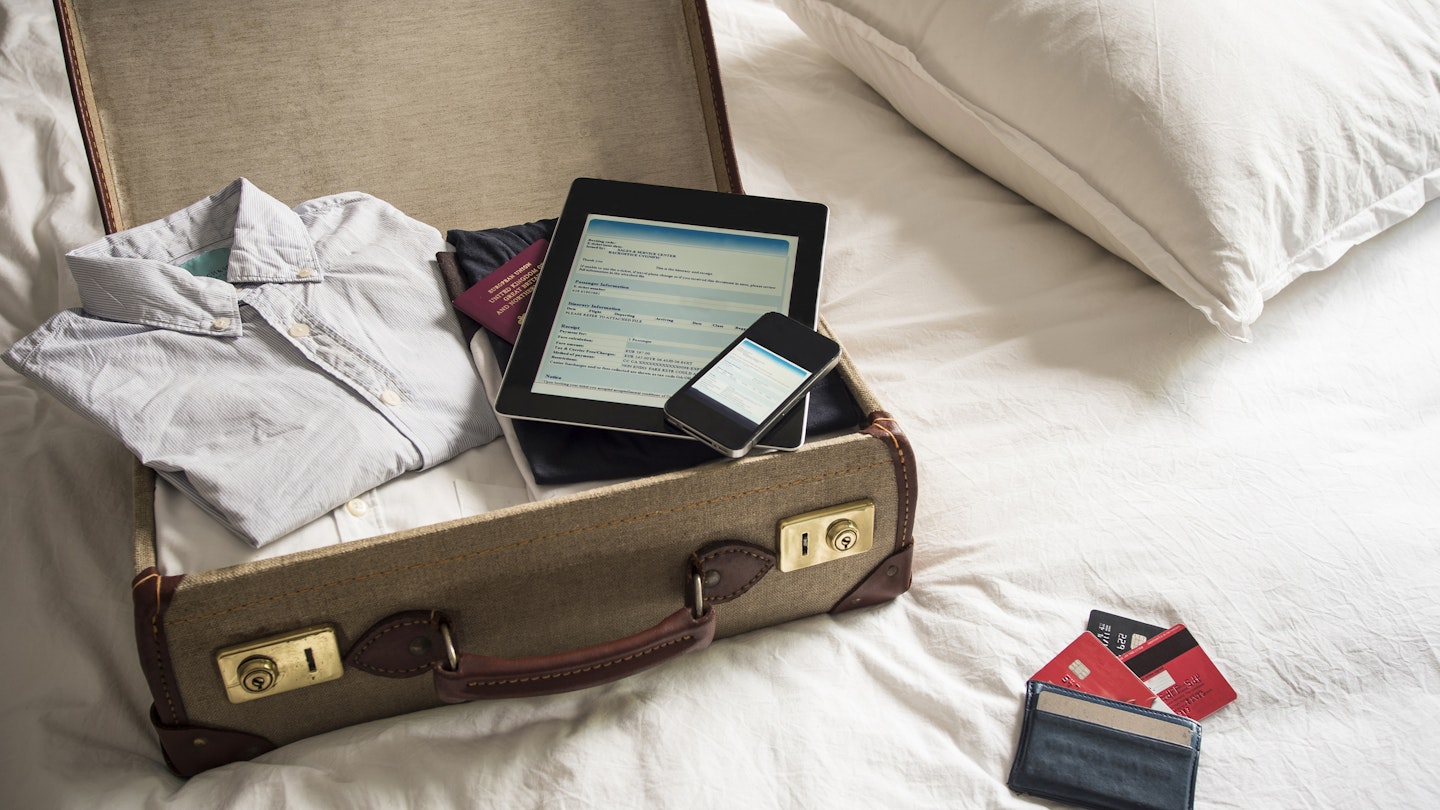
The last thing you want to think about when you’re getting excited about a trip is what might go wrong. But sometimes things like sudden illness, delayed flights or even natural disasters do occur. Here are a few things that it’s sensible to take with you when it comes to travel safety.
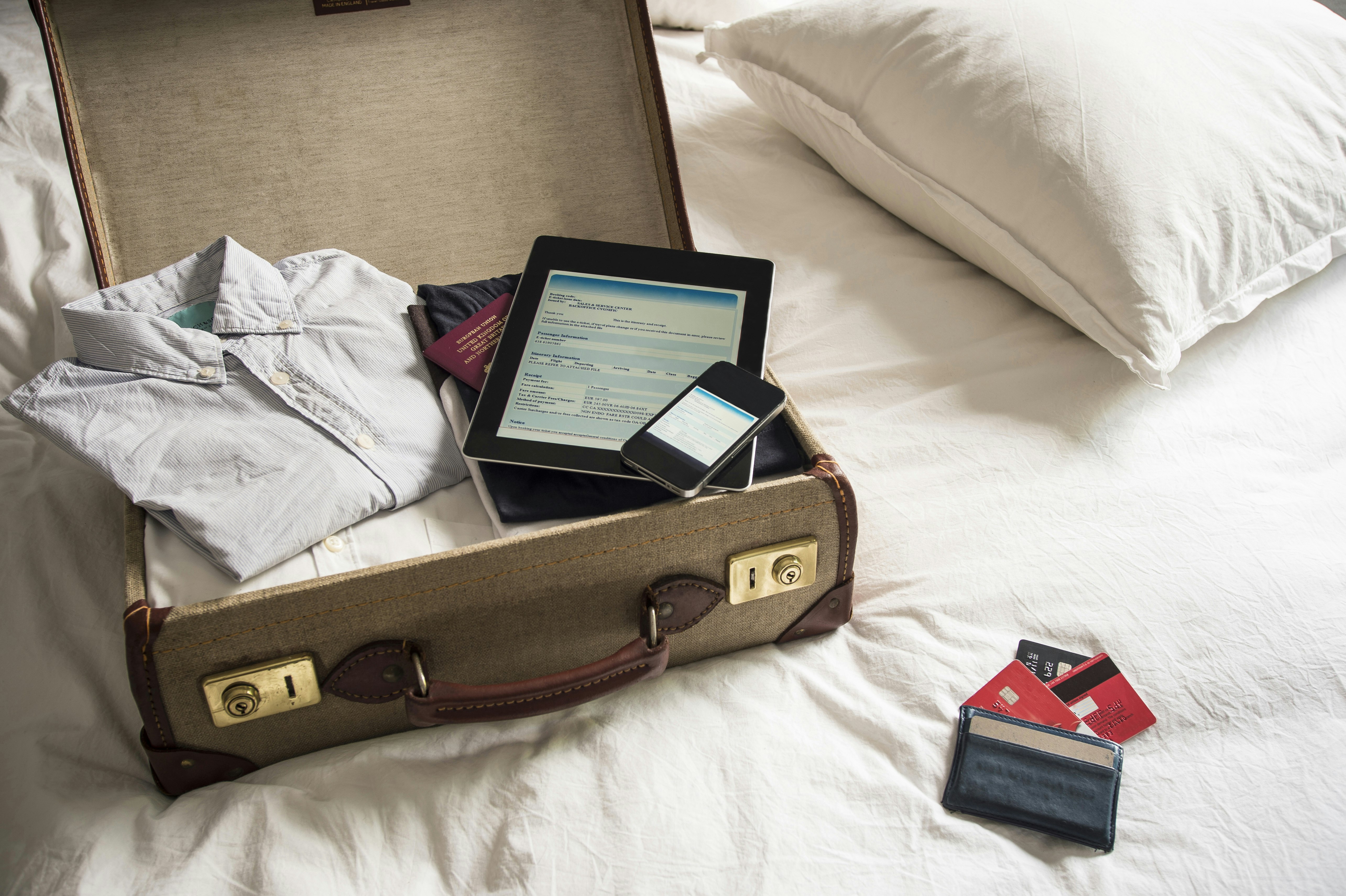
To start with, take some advice about what the most likely issues associated with your destination might be. During most trips, the most likely emergencies to arise will be largely similar to emergencies that can occur at home: hurting yourself, or falling ill. Consider going to the doctor in advance of your trip to check whether there are any particular risks. Don’t forget to take a copy of any prescriptions.
Exotic natural disasters are rare, though, but they happen – so take a few minutes to do a bit of research, and take some advice. Sometimes there are specific things that you might not be familiar with.
Read more: These cities are considered the safest in the world
For example, if you’re going to Japan , California , New Zealand , Chile or anywhere else that earthquakes are prevalent, what can you do to prepare? Did you know that standing in a doorway like many of us were taught in school isn’t the current recommendation any more? Official government channels on YouTube can be a handy guide.
Local knowledge can’t be beaten if you can get it, though: if you’re travelling to Australia at the moment, do you know where to get information about bushfire safety, and how to find safer areas in the event of an emergency?
Have a think and always make sure you know what the emergency procedures are for where you’re staying, especially if you’re in a holiday house or apartment. Always pack a pair of comfortable walking or running shoes in case you need to get away from somewhere in a hurry.

Make sure you’re well before you leave and protected from likely diseases
Another thing you should take with you when you travel: antibodies. I’m an aviation journalist, not a medical professional, so check with your doctor and consult healthcare authority websites for vaccination recommendations. The NHS in the UK or the CDC in the US are good starting sources here, rather than just Dr Google.
If you’re crossing hemispheres and heading to winter, consider making one of your first stops a flu vaccination, which many pharmacies will be able to provide without a prescription for a reasonable cost.
Read more: How to get the most out of your devices while travelling
The polyvalent (multi-strain) flu vaccines are formulated every six months, for northern and southern hemisphere winters, and so if you’re vaccinated in Europe in November you may not be covered for, say, the strains of flu going around New Zealand as you ski down the slopes of the Southern Alps in August.
Sexual and reproductive health is also important, and access to what you need can be complicated, awkward or simply not available. If a barrier method like condoms and/or dental dams is for you, bring a brand you know and trust from home. If you’re heading to a high-risk location for HIV, consider talking to your doctor or to a specialist about PrEP, pre-exposure prophylaxis, which can prevent HIV infection with a single daily pill, also known as Truvada.
Bring any over-the-counter medications you take too: sometimes something as simple as anti-diarrhoea pills aren’t the same brands or don’t work the same way, and that’s not something you want to be stressing about if you have traveller’s tummy.
Sort your cash — literally
It may feel like the kind of advice your grandad might give you, but always carry an emergency cash stash, perhaps a couple hundred US dollars or so, separated into several places.
Keep part in your wallet, perhaps another tucked away in your carry on bag, another in your checked bag, and – here’s my top tip – in your washbag. An old lip balm case is a great place to hide away a few tightly rolled bills in the event that you end up in a jam.
Yes, I’ll normally just withdraw cash from a bank ATM at the airport, but if that doesn’t work for whatever reason I can at least go to the bureau de change and exchange cash to get where I’m going.

Take digital and some paper copies of vital documents
I actually keep a password protected word processing document on my laptop with three sorts of information: firstly my travel plans, secondly my personal information, and thirdly scans of important documents.
In terms of travel plans, whenever I travel I note down where I’m going and where I’m staying, and make sure I pass this info to a trusted friend. This not only puts my loved ones’ mind at rest but having it all written down is useful when I’ve got to a city and realised there are eight hotels from the same chain and I’m not entirely certain which one I need the taxi to take me to.
(And, I’m not going to lie: a couple of times it’s saved my skin when I realised that my flight arrived on a different day than I’d assumed!)
Read more: What happens when someone dies on board a plane?
For personal information, that’s the basic stuff that’s needed in case you lose your ID: name, date of birth, place of birth, national medical system number, and so on. It’s also contact details: for your emergency contact back home, for your doctor, for your travel insurance, for your bank branch, for your country’s embassy or consulate if you’re heading somewhere that might be needed. I also add the generic name of any medications I take regularly (so, “loratadine 10mg” rather than “Claritin” for my hay fever antihistamines).
For scans of important documents, I’ll take a quick snap of crucial items with my phone and paste them into the document. That includes things like my passport’s photo page, any relevant visas, my driving licence, my medical card (including the EHIC if you’re in the EU), any relevant prescriptions, and so on.
Every time I never have to use any of this stuff, I’m delighted – but every time I do need it, I’m relieved to have it all available and on hand.
Explore related stories
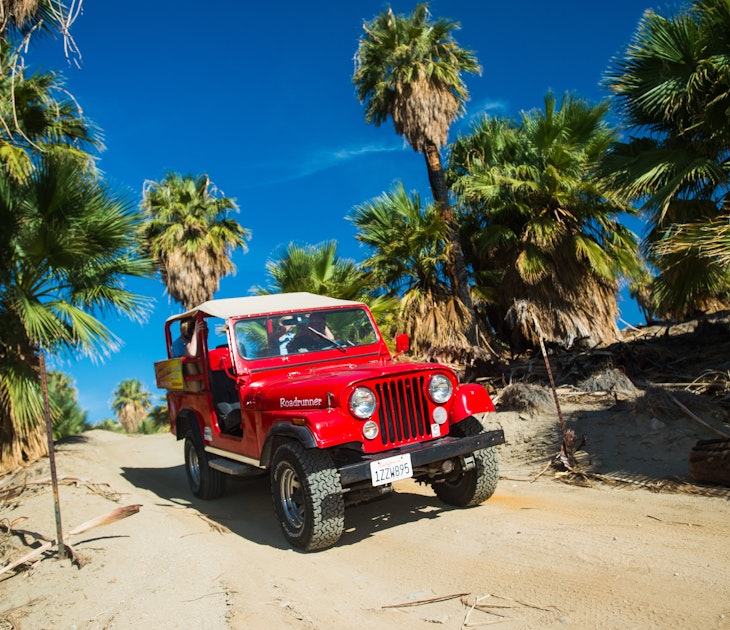
Jan 2, 2024 • 8 min read
Whether you’re looking for outdoor adventure, culture, wellness or epic events, Greater Palm Springs is for you

Sep 14, 2023 • 7 min read

Jul 28, 2023 • 5 min read

Nov 15, 2022 • 6 min read

Jul 13, 2022 • 8 min read

Jun 20, 2022 • 5 min read

Jun 13, 2022 • 3 min read

May 16, 2022 • 7 min read

Mar 30, 2022 • 6 min read

Mar 18, 2022 • 6 min read

An official website of the United States government
Here’s how you know
Official websites use .gov
A .gov website belongs to an official government organization in the United States.
Secure .gov websites use HTTPS
A lock ( Lock A locked padlock ) or https:// means you’ve safely connected to the .gov website. Share sensitive information only on official, secure websites. .
Archived Content. This page contains information that may not reflect current policy or programs. Learn more
How to Build a Kit for Emergencies
NASHVILLE – What goes into an emergency supplies kit?
Ready.gov and get a list of what you’ll need if you have to survive for several days after a disaster.
Being prepared means having your own food , water and other supplies to last for at least 72 hours. A disaster supplies kit is a collection of basic items your household may need in the event of an emergency.
Make sure your emergency kit is stocked with the items on the checklist below. Most of the items are inexpensive and easy to find and any one of them could save your life. Headed to the store? Download a printable version to take with you. Once you take a look at the basic items consider what unique needs your family might have, such as supplies for pets or seniors .
Basic Disaster Supplies Kit To assemble your kit store items in airtight plastic bags and put your entire disaster supplies kit in one or two easy-to-carry containers such as plastic bins or a duffel bag.
A basic emergency supplies kit could include the following recommended items:
- Water (one gallon per person per day for at least three days, for drinking and sanitation)
- Food (at least a three-day supply of non-perishable food)
- Battery-powered or hand crank radio and a NOAA Weather Radio with tone alert
- First aid kit
- Extra batteries
- Whistle (to signal for help)
- Dust mask (to help filter contaminated air)
- Plastic sheeting and duct tape (to shelter in place )
- Moist towelettes, garbage bags and plastic ties (for personal sanitation)
- Manual can opener (for food)
- Cell phone with chargers and a backup battery
- Download the Recommended Supplies List (PDF)
Additional Emergency Supplies Currently, the Centers for Disease Control (CDC) recommends people include additional items in their kits to help prevent the spread of coronavirus or other viruses and the flu.
Consider adding the following items to your emergency supply kit based on your individual needs:
- Cloth face coverings (for everyone ages 2 and above), soap, hand sanitizer, disinfecting wipes to disinfect surfaces
- Prescription medications
- Non-prescription medications such as pain relievers, anti-diarrhea medication, antacids or laxatives
- Prescription eyeglasses and contact lens solution
- Infant formula, bottles, diapers, wipes and diaper rash cream
- Pet food and extra water for your pet
- Cash or traveler's checks
- Important family documents such as copies of insurance policies, identification and bank account records saved electronically or in a waterproof, portable container
- Sleeping bag or warm blanket for each person
- Complete change of clothing appropriate for your climate and sturdy shoes
- Fire extinguisher
- Matches in a waterproof container
- Feminine supplies and personal hygiene items
- Mess kits, paper cups, plates, paper towels and plastic utensils
- Paper and pencil
- Books, games, puzzles or other activities for children
FEMA’s mission is helping people before, during, and after disasters.
An Essential List of Every Item to Pack in an Emergency Preparedness Kit
Having a disaster survival kit in your home doesn't make you a doomsday prepper, just smart.

We've been independently researching and testing products for over 120 years. If you buy through our links, we may earn a commission. Learn more about our review process.
While pre-assembled emergency kits from retailers like Amazon and Walmart as well as startups like Judy and Preppi exist, we think no one knows better than you what your family will need in the event of an evacuation or crisis. Ready-to-buy packs won’t include diapers, your passports, or your backup pair of glasses. Packing your own DIY kit means you can control the quality of the items included, like choosing a solar-powered phone charger instead of a one-time charger block or investing in a portable water purifier instead of opting to lug heavy gallon-size jugs of water.
If your packing list includes items that you use every day — like sensible shoes, a computer, an extra pair of glasses, or a warm jacket — you don’t have to pack them away yet. Just write a short secondary list of the things you need to gather at the last minute, and keep it handy for when the time comes.
When putting together a disaster survival kit, the first decision to make is what kind of container will work best for you. You may be using the supplies at home after a simple power outage, but there’s also a chance that you’ll need it while on the move (hence the term "go bag"). City dwellers may want to divide the items into a couple of backpacks that you can split between family members in case of evacuation. If you have more space and access to a car, you can opt for plastic storage bins that can be stored in the garage and then carried into the trunk. Whichever option to choose, include an itemized emergency kit list in the backpack pocket or taped to the lid of the bin so you’ll know what’s where.
Ideally you want to pack these kits and leave them ready and untouched until needed. In reality, though, you will probably end up digging inside to get cash for the babysitter or to grab something you need from the first-aid kit. Just be diligent about replacing the purloined items as soon as possible. And post a yearly reminder in your family calendar so you can make sure everything is still unexpired and up-to-date.
Including items from the basic lists compiled by the Red Cross , FEMA , and the Centers for Disease Control and Prevention (CDC), we’ve put together a practical checklist of necessities and nice-to-haves in case of an emergency, including some product recommendations from the experts in the Good Housekeeping Institute .
Here's a complete list of basic supplies to keep in your emergency kit:
•Enough water for three days. Experts recommend at least a gallon of water per person per day. You can tote the full supply in pouches or jugs, or opt to treat water on the go with lighter options like portable water filters and water purification chemicals. The Lifestraw is widely recommended by both humanitarian groups and hardcore campers, but while it's great for personal use, it's less practical for groups or for cooking purposes (you'll need containers if you plan to use it to clean water for a group). Meanwhile, the Survivor Filter PRO works quickly to remove serious impurities and, at eight ounces, is very portable. After being triple-filtered, the water can be decanted into water bottles or used for cooking. Finally, chemical treatment products like Aquamira Water Treatment Drops are lightweight and easy to pack, and you can treat the water right in any portable bottle.
•Water bottles. You’re going to want a good water bottle that’s unbreakable, easy to clean, and long-lasting. The Good Housekeeping Institute recommends the S’Well stainless steel vacuum-insulated bottle .
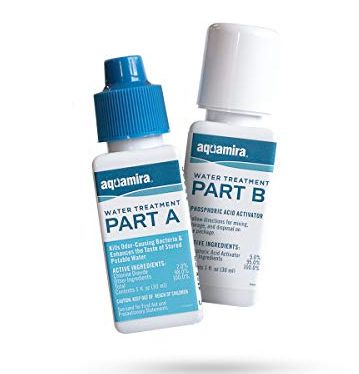
Aquamira Water Treatment Drops
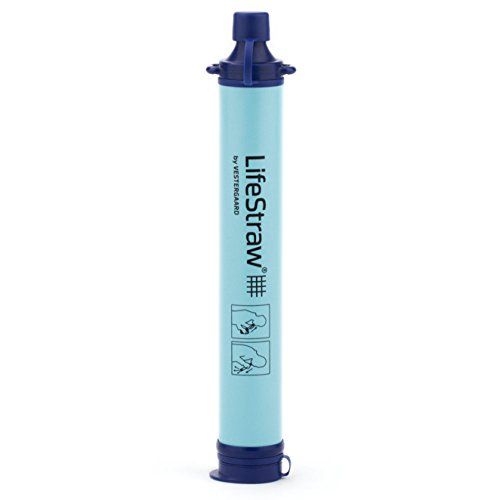
LifeStraw Personal Water Filter

Survivor Filter PRO Water Filter

S'well Stainless Steel Water Bottle
•Enough food for three days. Stock a selection of non-perishable, high-protein foods like healthy canned goods (beans, tuna , salmon, chili , peanut butter, mixed nuts, fruit in water) that you don’t need to cook, as well as powdered milk and shelf-stable snacks like dried fruit, dry-roasted edamame, and your favorite protein bars . When it comes to canned goods, it's best to look for low-sodium options, and cans without BPA lining , if you can find them.
•Mess kits. Eating out of cans gets old fast. Barbeqa's four-person camping set includes plates, bowls, cups, and sporks, is made from BPA-free polypropylene, and comes in a handy mesh bag.
•A waterproof Ziploc bag of important documents and money. In addition to a paper map of your area, make sure you have you and your family's passports, bank account records, insurance policies, a paper list of phone numbers and addresses of friends and family, medical and prescription information, as well as cash and/or travelers' checks.
•First-aid essentials. No emergency kit is complete without a reliable first-aid kit. The First Aid Only 299 Piece All-Purpose First Aid Kit is comprehensive, compact, and impressively organized. With 299 pieces, including bandages, cold packs, and pain meds, you'll be ready for any cut, burn, or other minor injury. •Miscellaneous health and hygiene supplies. In addition to a first-aid kit, you'll want a supply of N-95 masks , disinfectant wipes, baby wipes , diapers , personal hygiene items, bleach , and trash bags on hand.
•A multi-use tool. The best ones come with everything from scissors and a can opener to pliers and screwdrivers. While it's not cheap, the Leatherman Free P2 is no flimsy keychain accessory. Its 19 stainless steel tools are full-size so you won’t be fiddling around with teeny blades and puny pliers. Still, at at 7.5 ounces, it’s not too heavy.
•Duct tape. A roll of waterproof sticky stuff is perfect for quick fixes and McGyver-worthy modifications, so stock up on Duck Max Strength Duct Tape .

Barbeqa 4-Person Camping Mess Kit
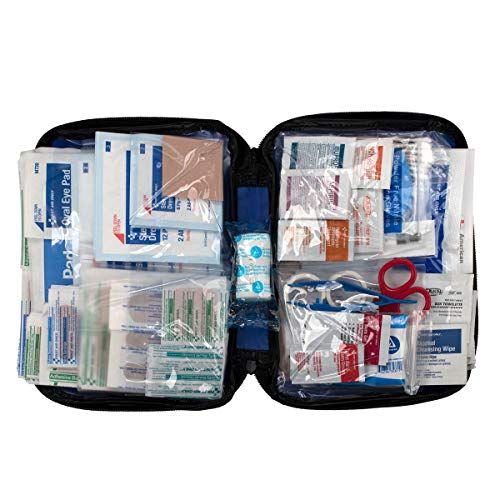
First Aid Only 299-Piece All-Purpose First Aid Kit
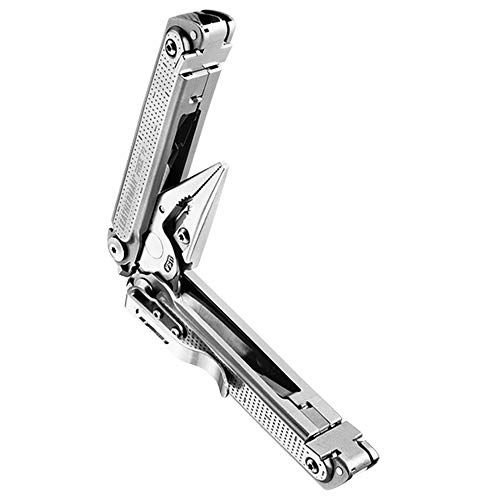
LEATHERMAN Free P2 Multitool
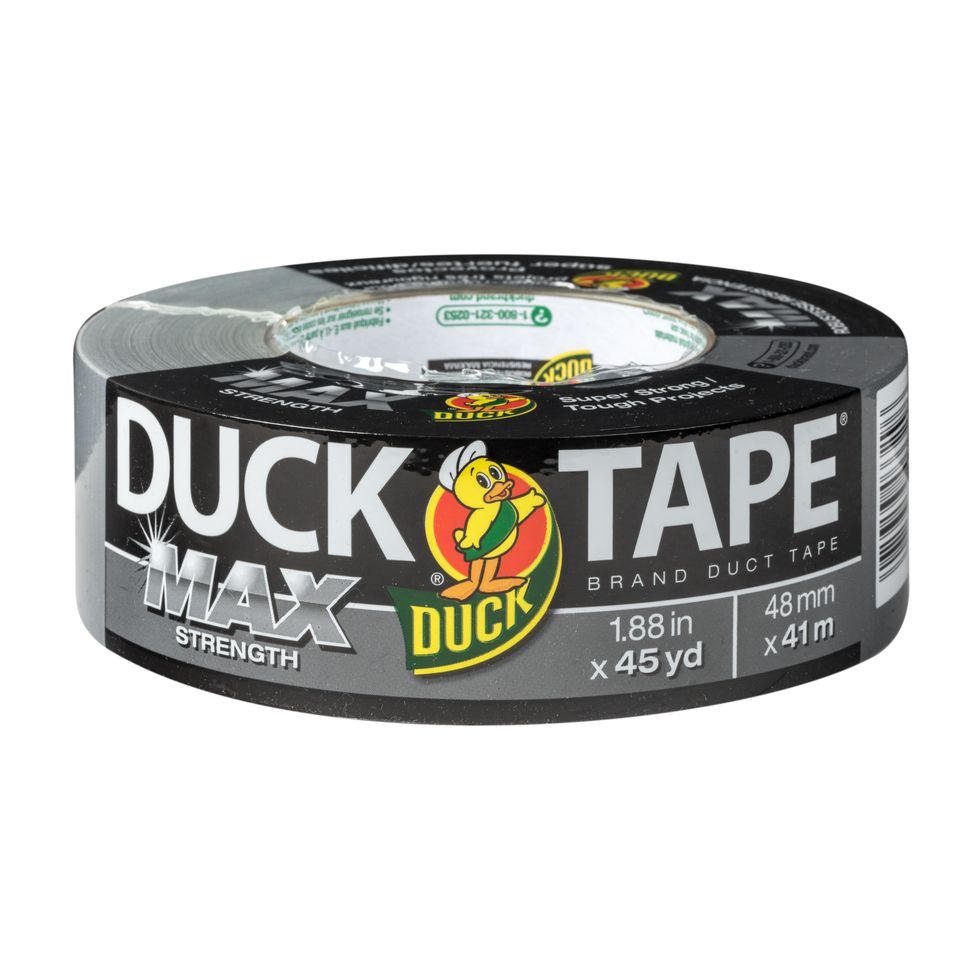
Duck Max Strength Duct Tape
•A crank-powered radio. During an emergency — especially a weather-related disaster — a radio is the best way to get reliable updates. The Midland ER210, Emergency Compact Crank Weather AM/FM Radio is a compact and sturdy option that offers 45 minutes of radio for just one minute of hand-cranking and it features a powerful flashlight component, too.
•A headlamp. In case of power outages, not only does the top-rated Black Diamond Spot 325 Headlamp run for 12 hours on AAA batteries, its very handy dimmer switch means you can look up from a task without blinding your companions.
•Portable lighting. Keep everything illuminated with LuminAID Solar Inflatable Lanterns . These surprisingly attractive lanterns pack flat, power up quickly, and a full charge can supply up to 24 hours of light. The LuminAID is waterproof and, when in turbo mode, it puts out a respectable 75 lumens to work by.
•A reusable phone charger. Several of the most popular ready-to-buy emergency kits include one-time phone chargers, but an efficient, folding solar panel charger can be used repeatedly. The Good Housekeeping Institute recommends the Big Blue 3 Solar Charger , which has three USB outlets that can charge several devices simultaneously.
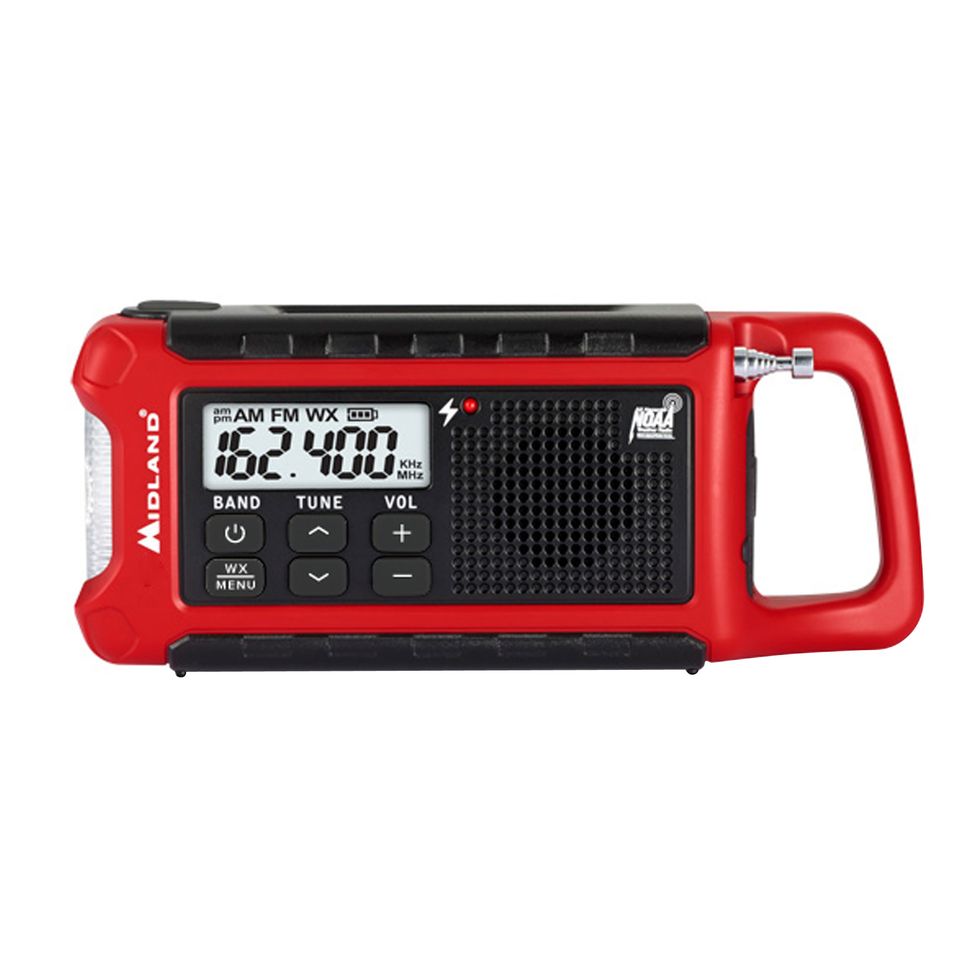
Midland Weather Alert Radio

Black Diamond Spot 325 Headlamp

LuminAID Solar Inflatable Light
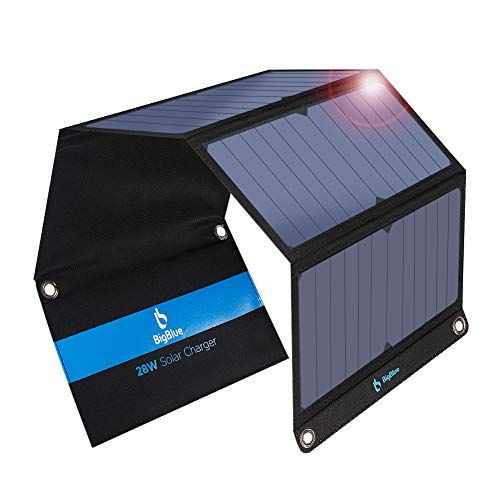
BigBlue 3 Solar Charger
•Lightweight, waterproof blankets. Full-size sleeping bags aren't easy to carry around, so opt for a supply of SOL (Survive Outdoors Longer) Emergency Blankets instead. These affordable lightweight blankets reflect 90% of your body’s heat back and, bonus, won’t tear as easily as Mylar blankets.
•Waterproof matches and/or firestarters. You'll need a source of heat in case of power outages. The Kräftig Fire Starter is good for 20,000 strikes, meaning it will last much longer than a pack of waterproof matches.
• A whistle. In the event you lose cell service or battery power, a whistle can help alert emergency rescue crews to your location in hazardous conditions.
•Pet supplies. Don't forget about your pets — include three days' worth of dry food, any meds, collapsible plastic bowls , and litter box supplies.
•AAA batteries. A best-seller on Amazon, this 48-count pack of Energizer AAA batteries is a great deal — take note that Energizer claims these batteries will last up to 10 years in storage.
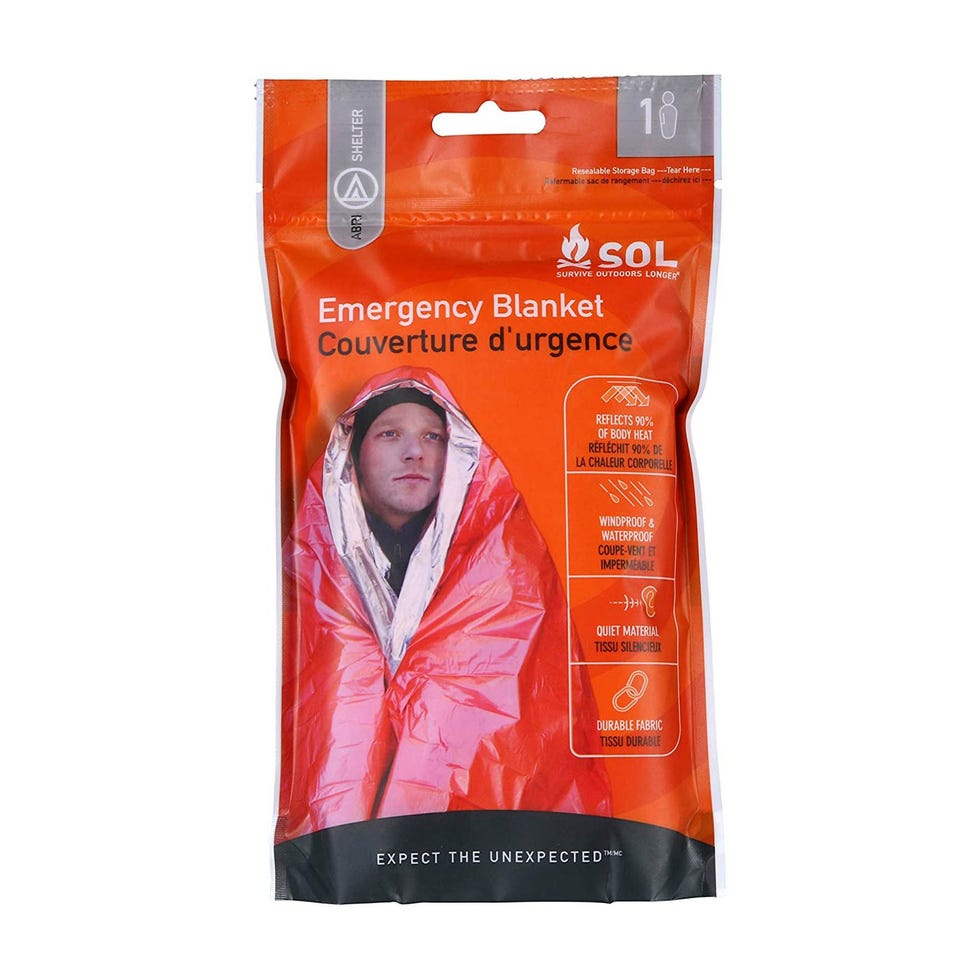
SOL Emergency Blanket
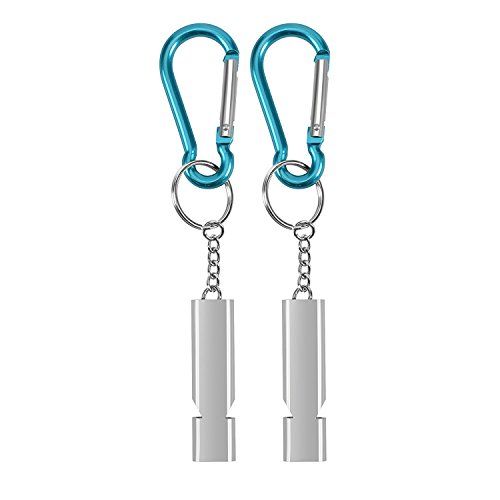
Michael Josh Emergency Survival Whistle Kit (2 Count)
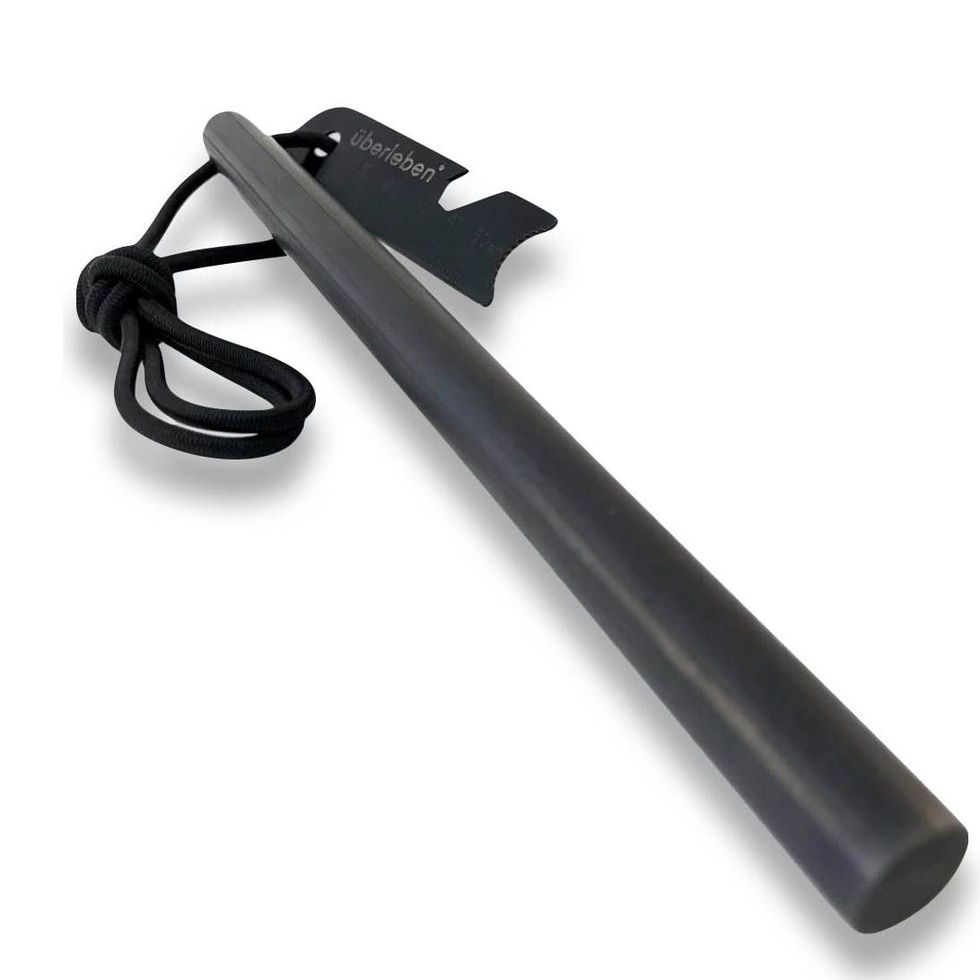
überleben Kräftig Fire Starter
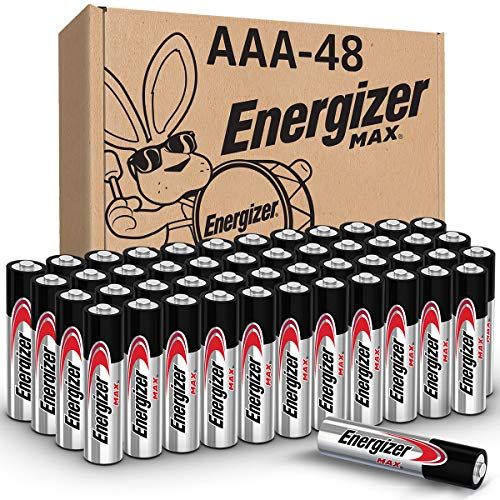
Energizer AAA Batteries (48 Count)
Everyday items to add to your gather-at-the-last-minute list:.
- Prescription medications (On the list, include each individual prescription so nothing gets left behind. Try to keep at least two weeks' supply on hand at all times.)
- Driver's license
- Eyeglasses and contact lenses
- Good walking shoes
- Clothing that works in all weather (Include a base layer, a layer for warmth, and a breathable waterproof outside layer.)
- Phones and charging cables
- Infant formula
A writer and editor with 20+ years of experience in print and digital publishing, Ann has worked for publications including AFAR and Travel + Leisure.

@media(max-width: 64rem){.css-o9j0dn:before{margin-bottom:0.5rem;margin-right:0.625rem;color:#ffffff;width:1.25rem;bottom:-0.2rem;height:1.25rem;content:'_';display:inline-block;position:relative;line-height:1;background-repeat:no-repeat;}.loaded .css-o9j0dn:before{background-image:url(/_assets/design-tokens/goodhousekeeping/static/images/Clover.5c7a1a0.svg);}}@media(min-width: 48rem){.loaded .css-o9j0dn:before{background-image:url(/_assets/design-tokens/goodhousekeeping/static/images/Clover.5c7a1a0.svg);}} Home Products

The Best Photo Book Services

The Best Patio Furniture

The Best Cleaning Products

The Best Lumbar Support Pillows
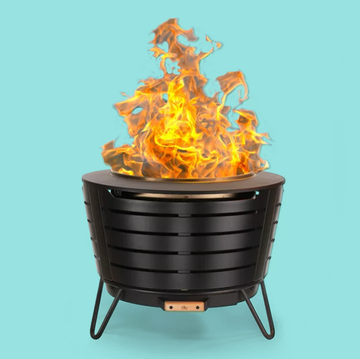
The Best Walmart Fire Pits
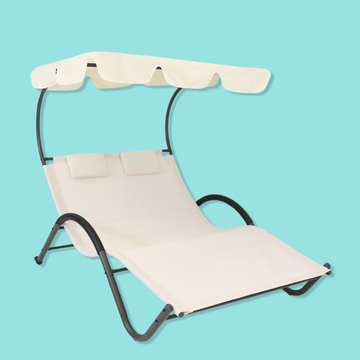
The Best Pool Lounge Chairs

The Best Outdoor Dinnerware Sets

The Best Bed Frames
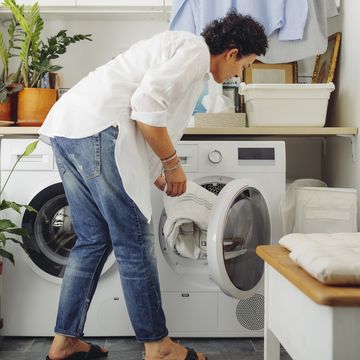
Are Earth Breeze Detergent Sheets Worth It?
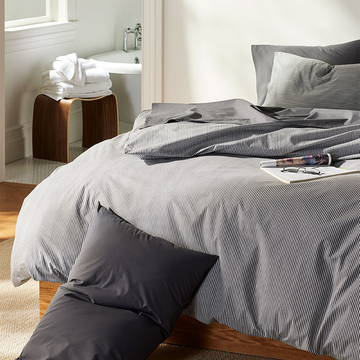
The Best of Brooklinen's Birthday Sale 2024

Everything Our Home Design Editor Wants Now
What To Have In Your Car Emergency Kit
Nearest aaa approved auto repair facilities.
- 1 Mountain View Auto Care / Radiator (Trc) 1905 Old Middlefield Way Mountain View, CA, 94043 54001 0.7 miles
- 2 Dean's Automotive 2037 Old Middlefield Way Mountain View, CA, 94043 1739 0.9 miles
- 3 AAA Mountain View Auto Repair Center (AAA Owned Facility) 181 W Evelyn Ave Mountain View, CA, 94041 110562 1.1 miles
- 4 German Motor Specialist 2587 Wyandotte St Mountain View, CA, 94043 107381 1.5 miles
Whether you're preparing for your next road trip or the next season, it's a good idea to take inventory of the items in your car emergency kit. AAA recommends having an emergency kit in your vehicle and provides this list of things to include and tips on where to stow them. Be sure to replenish any depleted items as needed.
Cell phone and car charger (glove compartment)
First-aid kit (glove compartment), blanket (luggage area), drinking water/snacks for everyone in the car including pets (some in glove compartment, the rest in the luggage area), flashlight with extra fresh batteries, rags, paper towels or pre-moistened wipes, basic set of tools along with duct tape and car emergency warning devices such as road flares or reflectors (luggage area), ice scraper/snow brush, jumper cables/jump pack, traction aid such as sand, salt or non-clumping cat litter, tarp, raincoat and gloves, aaa conservation efforts + battery recycling, aaa advocates awareness for slow down move over law, the check engine light: common causes and how to fix it, 7 tips on how to get unstuck from snow.
Tuesday, April 30, 2024 77° Today's Paper
At least 40 dead in Russian plane’s fiery emergency landing
By Associated Press
May 5, 2019
- Share on Facebook
- Share by email

COURTESY RICCARDO DALLA FRANCESCA
Smoke rises from a fire on a plane at Moscow’s Sheremetyevo airport today.
MOSCOW >> A Russian airliner burst into flames while making an emergency landing at Moscow’s Sheremetyevo airport this evening, and at least 40 people died, officials said.
The Sukhoi SSJ100 operated by national airline Aeroflot had 73 passengers and five crew members on board when it touched down and sped down a runway spewing huge flames and black smoke.
Elena Markovskaya, a spokeswoman for Russia’s Investigative Committee, said early Monday that 41 people were killed. But Health Minister Veronika Skvortsova said later that 38 survived, implying the death toll was 40.
The victims included one member of the crew and at least two teenagers, according to the Investigative Committee.
Video showed desperate passengers leaping out of the plane onto inflatable evacuation slides and staggering across the airport’s tarmac and grass, some holding luggage.
The airport said in a statement that the plane, which had taken off from Sheremetyevo Airport for the northern city of Murmansk, turned back for unspecified technical reasons and made a hard landing that started the fire.
Video broadcast later on Russian television showed flames bursting from the jetliner’s underside as it lands and then bounces. The plane apparently did not have time to jettison fuel before the emergency landing, news reports said.
The SSJ100, also known as the Superjet, is a two-engine regional jet put into service in 2011 with considerable fanfare as a signal that Russia’s troubled aerospace industry was on the rise.
However, the plane’s reputation was troubled after defects were found in some horizontal stabilizers.
The plane’s manufacturer, Sukhoi Civil Aircraft, said the plane in today’s accident had received maintenance at the beginning of April. Aeroflot said the pilot had some 1,400 hours of experience flying the plane.
The plane is largely used in Russia as a replacement for outdated Soviet-era aircraft, but also has been used by airlines in other countries, including Armenia and Mexico.
This is the second fatal accident involving a SSJ100. In 2012, a demonstration flight in Indonesia struck a mountain, killing all 45 aboard.
Subscriber Favorites
Walnut recall issued for multiple states including hawaii, stagecoach, coachella fans abandon tons of camping gear, clothes, justice department moves to reclassify marijuana use, yen retreats after u.s. data as eyes turn from tokyo to fed, hawaii lawmakers aim to enlarge ‘rainy day’ and retirement funds, more world news.
Teenager killed, 4 injured in London sword attack
Ukraine’s trust in NATO allies dented by arms delivery failures
Israel wary of possible ICC arrest warrants related to Gaza war
World Central Kitchen will resume operations in Gaza Strip
Ukrainian Army head says Russia dominates front in several areas
Looking back.

April 24, 2001: Hawaii public school teachers ratify contract, ending 19-day strike
Free Domestic Shipping on Orders Over $150

- American Made
- Gifts Under $50
- Give a Gift Card
- 1927 S'mores
- Alfred Lane
- Allegiance Flag Supply
- Andrée Jardin
- Blackbird Letterpress
- Bradley Mountain
- Brooklyn Grooming Co.
- Calyan Wax Co.
- Cotton California
- Craft + Foster
- Duke Cannon
- Ebbets Field Flannels
- Ezra Arthur
- Faribault Woolen Mill Co.
- Fúchila Fresheners
- Fulton & Roark
- Good & Well Supply Co.
- Hella Slingshots
- Hooker Bath
- Hudson Made
- Imperial Barber Products
- Jack Rudy Cocktail Co.
- Kikkerland Design Inc.
- Knickerbocker MFG
- Leather Head Sports
- Leather Works Minnesota
- Lucky Bastard Co.
- Manready Mercantile
- Misc. Goods Co.
- Mollyjogger
- Native Maps
- Noah Marion
- North Drinkware
- Olive & Sinclair
- Oxford Pennant
- Pillbox Bat Co.
- Rockwell Razors
- Smithey Ironware
- Tait Design Co.
- The Ampal Creative
- The James Brand
- The Wild Standard
- This Is Ground
- Word. Notebooks
- Available Now
- (415) 579-1904
- USD CAD AUD GBP EUR JPY
Your Cart is Empty
- $0.00 Subtotal

Carry On Cocktail Kit - The Moscow Mule
Sold Out $14.00
Notify me when this product is available:
This kit includes the tools to mix two Moscow Mules mid-flight, including a bold and spicy small-batch ginger syrup.
Kit Components: Carry On Tin - (3.125" x 4.25" x 1") Recipe Card Bar Spoon 1/2 oz. Jigger Ginger Syrup Linen Coaster
Related Items
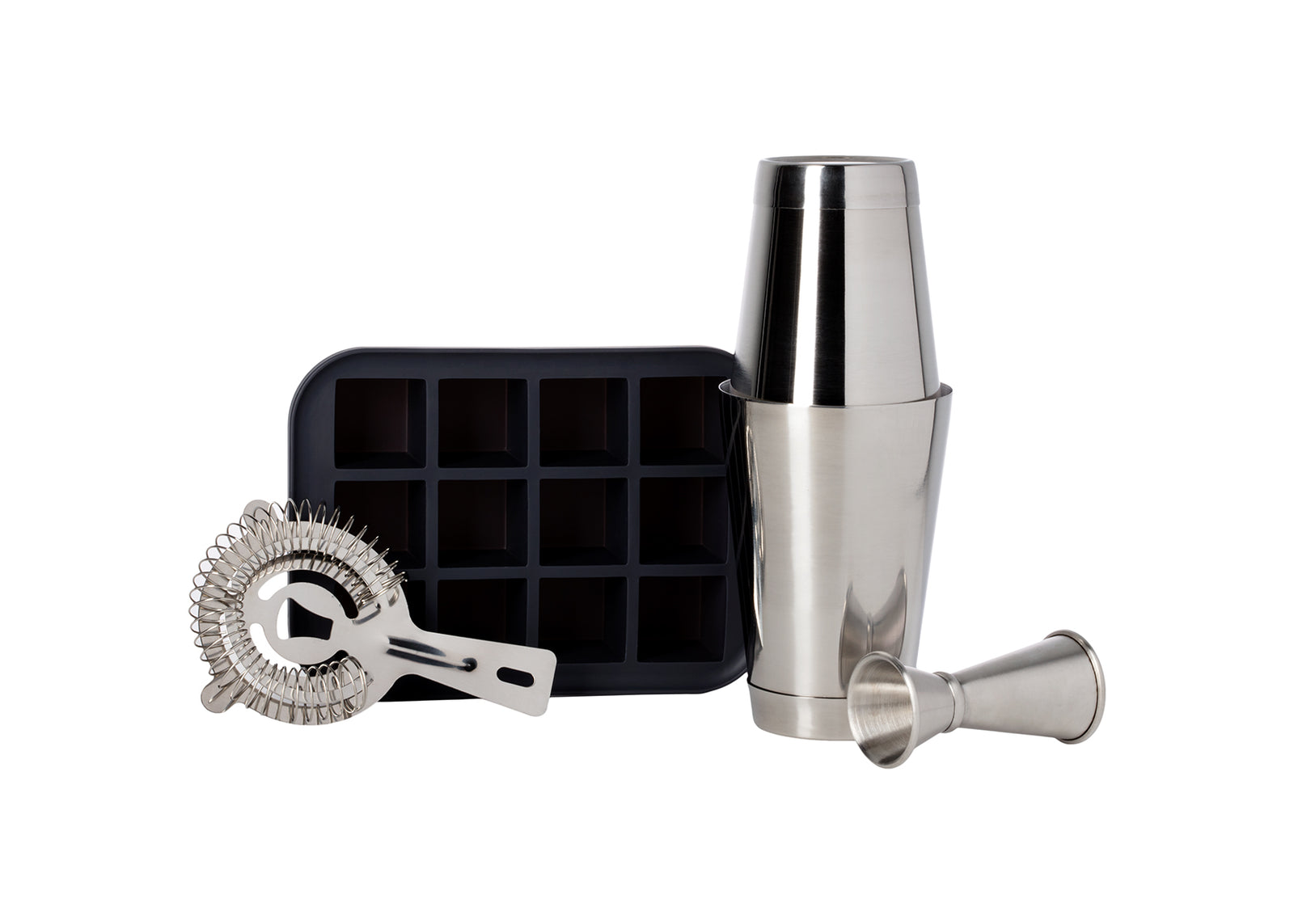
Recently Viewed Items
News + updates.
Sign up to get the latest on sales, new releases and more …

Russia's Nuclear Deterrent Command Center Imperiled by Winter Freeze—Report
A Russian nuclear deterrent command center in Moscow has been imperiled by power outages that have impacted more than one-quarter of the region's cities amid freezing temperatures, a Russian Telegram channel has reported.
The VChK-OGPU outlet, which purports to have inside information from Russian security forces, reported that the 820th Main Center for Missile Attack Warnings—part of the Russian Space Forces, a branch of the country's Aerospace Forces—near Solnechnogorsk in Moscow is without power.
It serves as the space forces early warning network against potential ballistic missile attacks.
The development comes as Russians are reported to be suffering from power outages in their homes in the Moscow region caused by technical issues at plants amid subzero temperatures.
On January 4, a heating main burst at the Klimovsk Specialized Ammunition Plant in the town of Podolsk, which is about 30 miles south of central Moscow. Since then, tens of thousands of Russians are reported to have no heating in their homes.
Affected areas include the cities of Khimki, Balashikha, Lobnya, Lyubertsy, Podolsk, Chekhov and Naro-Fominsk, a map published by a Russian Telegram channel and shared on other social media sites shows.
Other Russian media outlets reported that in Moscow, residents of Balashikha, Elektrostal, Solnechnogorsk, Dmitrov, Domodedovo, Troitsk, Taldom, Orekhovo-Zuyevo, Krasnogorsk, Pushkino, Ramenskoye, Voskresensk, Losino-Petrovsky and Selyatino are also without power.
The Telegram channel said that at the 820th Main Center for Missile Attack Warnings, "the crew...is on duty around the clock."
"It is here that the decision on a retaliatory nuclear strike is executed," the channel said.
Newsweek could not independently verify the report and has reached out to the Russian Defense Ministry by email for comment.
Power outages have also been reported in Russia's second-largest city, St. Petersburg, in the country's western Voronezh region, in the southwest city of Volgograd, and in Rostov, which borders Ukraine, a country that Russia has been at war with since February 24, 2022.
On Sunday, two shopping malls in St. Petersburg were forced to close because of problems with light and heating, reported local news outlet 78.ru. Hundreds of other homes in the city have had no electricity, water or heating for days amid temperatures of -25 C (-13 F).
Russian authorities have also been forced to compensate passengers of a train that ran from Samara to St. Petersburg (a 20-hour journey) without heating during -30 C (-22 F) temperatures. Videos circulating on social media showed carriage windows frozen over. A passenger also said the toilet didn't work during the trip because of frozen pipes.
Do you have a tip on a world news story that Newsweek should be covering? Do you have a question about the Russia-Ukraine war? Let us know via [email protected].
Related Articles
- Russia Maps Show 25% of Moscow Without Power Amid Winter Freeze 'Emergency'
- Serbian Mercenary Turns on Russian Leaders: 'They Treat Us Like Cattle'
- Winter Freeze Threats Come Back To Bite Russia As Power Outages Spread
Start your unlimited Newsweek trial
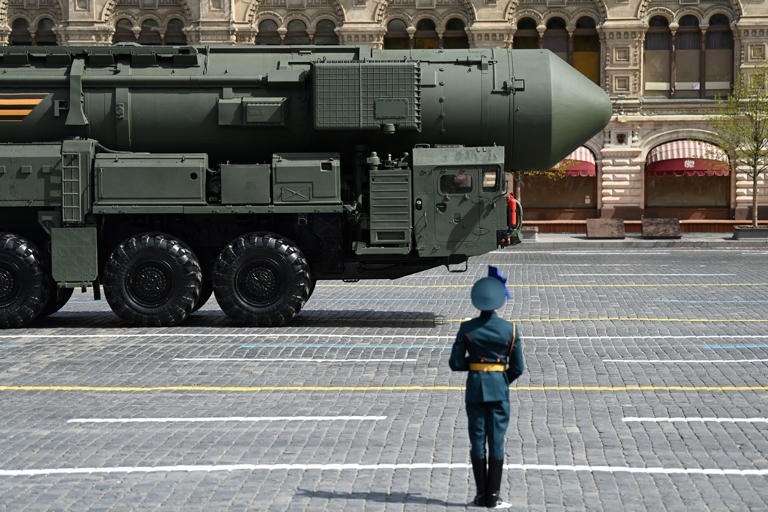

- Home & Kitchen
- Kitchen & Dining
- Kitchen Utensils & Gadgets
- Bar & Wine Tools
Image Unavailable

- To view this video download Flash Player

Other brands Traveler's Cocktail Kit - Moscow Mule
- Each kit contains TSA compliant tools and ingredients to make 2 Old Fashioned cocktails mid-flight.
- Kit components: carry on tin, recipe card, Spoon/Muddler, 1/2 oz jigger, ginger syrup, linen coaster
- Neatly packed in a travel tin.
- Designed to be used alongside spirits from airline Beverage cart.
- Alcohol not included.
More items you may like for your home

Product information
Looking for specific info, product description.
Traveler's Cocktail Kit - Moscow Mule
Customer reviews
Customer Reviews, including Product Star Ratings help customers to learn more about the product and decide whether it is the right product for them.
To calculate the overall star rating and percentage breakdown by star, we don’t use a simple average. Instead, our system considers things like how recent a review is and if the reviewer bought the item on Amazon. It also analyzed reviews to verify trustworthiness.
No customer reviews
- Amazon Newsletter
- About Amazon
- Accessibility
- Sustainability
- Press Center
- Investor Relations
- Amazon Devices
- Amazon Science
- Sell on Amazon
- Sell apps on Amazon
- Supply to Amazon
- Protect & Build Your Brand
- Become an Affiliate
- Become a Delivery Driver
- Start a Package Delivery Business
- Advertise Your Products
- Self-Publish with Us
- Become an Amazon Hub Partner
- › See More Ways to Make Money
- Amazon Visa
- Amazon Store Card
- Amazon Secured Card
- Amazon Business Card
- Shop with Points
- Credit Card Marketplace
- Reload Your Balance
- Amazon Currency Converter
- Your Account
- Your Orders
- Shipping Rates & Policies
- Amazon Prime
- Returns & Replacements
- Manage Your Content and Devices
- Recalls and Product Safety Alerts
- Conditions of Use
- Privacy Notice
- Consumer Health Data Privacy Disclosure
- Your Ads Privacy Choices

IMAGES
VIDEO
COMMENTS
Basic first-aid items. No travel emergency kit is complete without these basics: Antibacterial wipes: Wipes that kill germs can be helpful for cleaning tools and hands. Hand sanitizer: "Before ...
James says that these Aquabricks are "the best semi-portable water storage containers" he's seen. "They're strong, very stackable, and come with an optional water-filtration system ...
Best Overall: Adventure Medical Kit Ultralight Watertight .5 at Amazon ($23) Jump to Review. Best Basic: Johnson & Johnson First Aid To Go Kit at Amazon ($3) Jump to Review. Best Comprehensive ...
The mini first aid kit from General Medi has 110 pieces, including some surprising additions like an emergency foil blanket, a CPR respirator, ... Welly's Bravery Balm travel kit includes just enough items for 1 person to use to tend to cuts and abrasions while traveling. The set includes 1 small tin box that's 4 inches long and 1.7 inches ...
410-955-5000 Maryland. 855-695-4872 Outside of Maryland. +1-410-502-7683 International. Detailed list of what a traveler's first-aid kit should include.
Travel Medicine Kit Basics. Although you can buy a pre-packaged travel emergency kit, I recommend tailoring it to your specific needs. That way you're 100% familiar with what's in it ahead of time and have products you trust. Generally speaking, there are three sets of items that should be on your travel first aid kit list:
Amazon.com: travel emergency kit. ... 278 PCS First Aid Kit for Car Home, Gifts for Dad Him Men Women Kids Christmas,Survival Kits/Emergency Medical Supplies for Travel Office Outdoor Hiking Camping Backpacking (Red) 4.7 out of 5 stars. 96. 200+ bought in past month. $16.99 $ 16. 99.
7. Antiseptic wipes. For some reason this tends to be the one thing most people overlook when thinking of first aid, but antiseptic wipes are an absolute essential in any good pack. No one wants a cut or wound to get infected, and antiseptic wipes are perfect for cleaning it before applying a dressing.
Sunscreen: Staying sun safe is always important. Keep sunscreen stashed in the car for sunny days. Your best bet: a broad-spectrum formulation (SPF 30 or higher) that protects against both UVA and UVB rays. Tweezers: Tweezers can come in handy for all sorts of mishaps, from splinters to ticks. Make sure you have a pair stashed in your kit or in ...
Available in a durable plastic case, this portable mini kit contains 12 essential first aid items. Its compact size is perfect to carry in a purse, backpack, gym bag or luggage for on-the-go use. Emergency set contains two 5-by-7.75-inch Johnson & Johnson Hand Cleansing Wipes. Contains four 2-by-2-inch Band-Aid Brand Sterile Gauze Pads.
278 PCS First Aid Kit for Car Home, Gifts for Dad Him Men Women Kids Christmas, Survival Kits/Emergency Medical Supplies for Travel Office Outdoor Hiking Camping Backpacking (Black) 4.6 out of 5 stars. 78. 800+ bought in past month. $18.99 $ 18. 99. Save more with Subscribe & Save.
The travel first aid kit is Packed with 66 useful and valuable hospital grade medical Supplies. Our emergency car kit has higher quality contents than any other on the market ; Everything in One Bag: The travel essentials are crafted from durable rip-stop nylon and vinyl fabric. These medical Supplies are lightweight, Compact and yet still ...
Water: one gallon per person, per day (3-day supply for evacuation, 2-week supply for home) Food: non-perishable, easy-to-prepare items (3-day supply for evacuation, 2-week supply for home) Flashlight. Battery-powered or hand-crank radio (NOAA Weather Radio, if possible) Extra batteries. First aid kit. Medications (7-day supply) and medical items.
This emergency travel packing list will help you to be more prepared, resilient and result in a more enjoyable trip. I affectionately call this just in case travel kit my travel "headquarters," and it has saved the day countless times. Pack the items on this travel kit list, and I'm sure it will bail you out, too.
For personal information, that's the basic stuff that's needed in case you lose your ID: name, date of birth, place of birth, national medical system number, and so on. It's also contact details: for your emergency contact back home, for your doctor, for your travel insurance, for your bank branch, for your country's embassy or ...
In today's uncertain world, having an emergency preparedness kit is essential. This kit should include items necessary for survival during various emergencies, such as natural disasters or power ...
To assemble your kit store items in airtight plastic bags and put your entire disaster supplies kit in one or two easy-to-carry containers such as plastic bins or a duffel bag. A basic emergency supplies kit could include the following recommended items: Water (one gallon per person per day for at least three days, for drinking and sanitation ...
The First Aid Only 299 Piece All-Purpose First Aid Kit is comprehensive, compact, and impressively organized. With 299 pieces, including bandages, cold packs, and pain meds, you'll be ready for ...
Shop products from small business brands sold in Amazon's store. Discover more about the small businesses partnering with Amazon and Amazon's commitment to empowering them. Le
Flashlight with extra fresh batteries. Rags, paper towels or pre-moistened wipes. Basic set of tools along with duct tape and car emergency warning devices such as road flares or reflectors (luggage area) Ice scraper/snow brush. Jumper cables/jump pack. Traction aid such as sand, salt or non-clumping cat litter. Tarp, raincoat and gloves. Shovel.
Victoper LED Flashlight 2 Pack — $12.97 (35% off; originally $19.99) on Amazon . For more portable light, grab this handy two-pack of reliable flashlights. With up to 2,000 lumens of lighting ...
A Russian airliner burst into flames while making an emergency landing at Moscow's Sheremetyevo airport this evening, and at least 40 people died, officials said.
This kit includes the tools to mix two Moscow Mules mid-flight, including a bold and spicy small-batch ginger syrup. Kit Components:Carry On Tin - (3.125" x 4.25" x 1")Recipe CardBar Spoon1/2 oz. JiggerGinger SyrupLinen Coaster
Russia Maps Show 25% of Moscow Without Power Amid Winter Freeze 'Emergency' ... 9 Best Items Getting Cheaper at Costco in 2024 ... $1.2 Trillion US Travel Industry Is Plummeting, Says New Study ...
Buy Other brands Traveler's Cocktail Kit - Moscow Mule: Bar Sets - Amazon.com FREE DELIVERY possible on eligible purchases